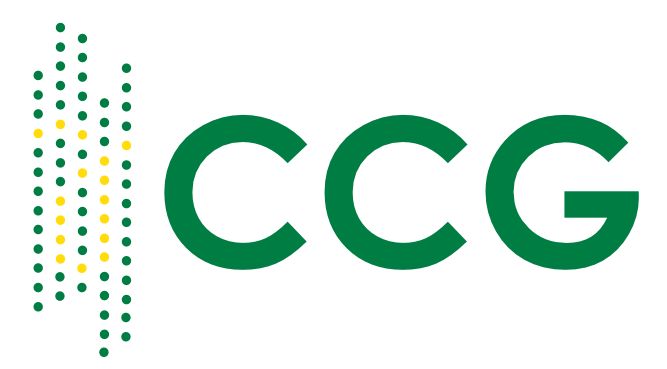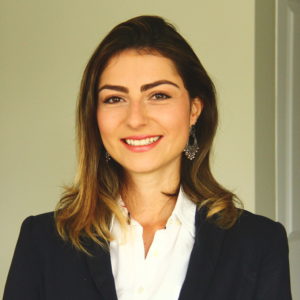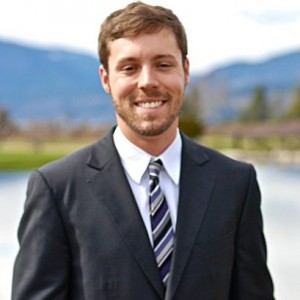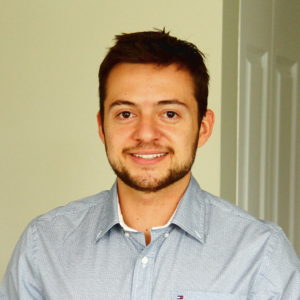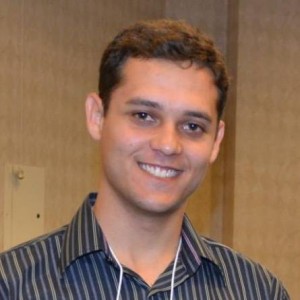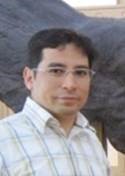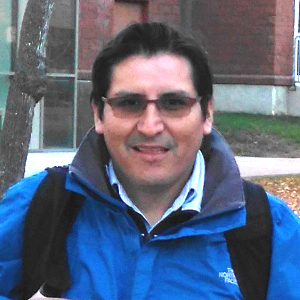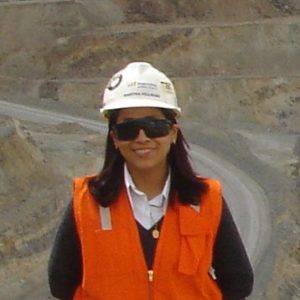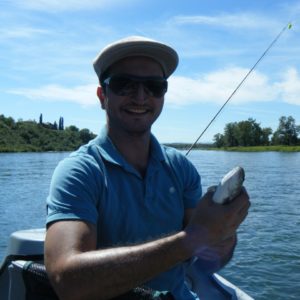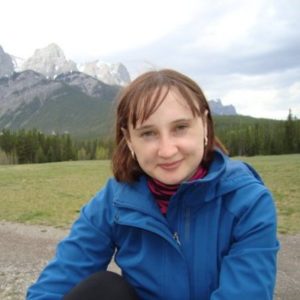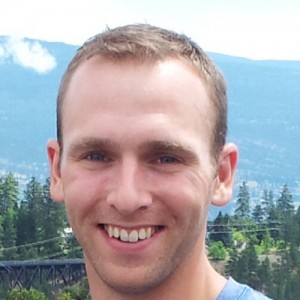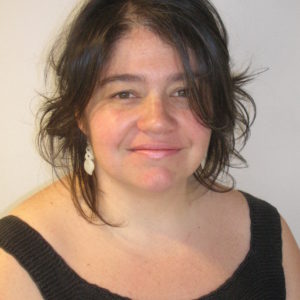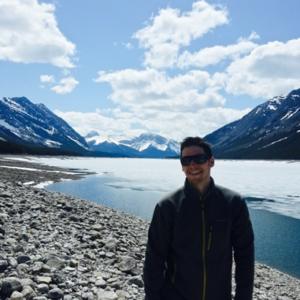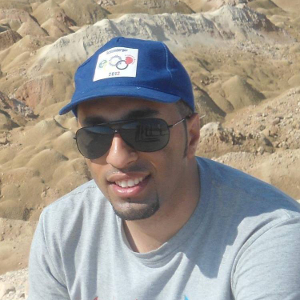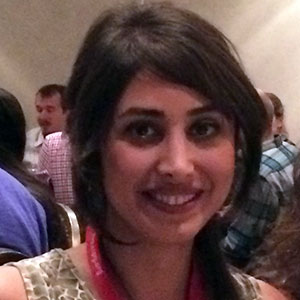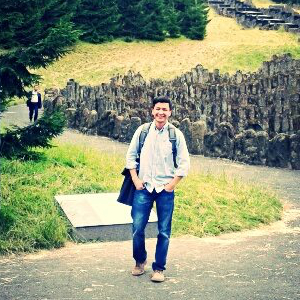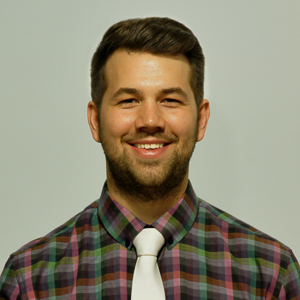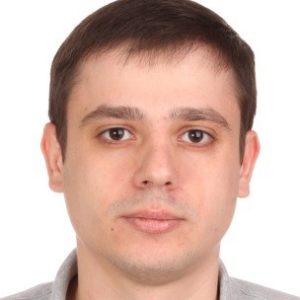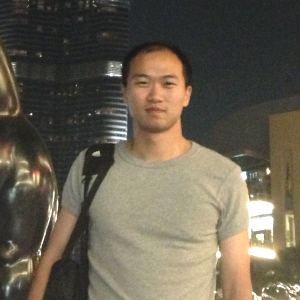The following table displays the CCG alumni who have graduated with M.Sc. and/or Ph.D. degrees under the supervision of Dr. Clayton Deutsch. Additional information is provided for select alumni in the left links.
| Year | Doctorate | Masters |
| 2020 | Felipe Alfredo Cabral Pinto | |
| 2019 | Yaroslav Vasylchuk, Enrique Gallardo, Ryan Martin, George Barros,Bo Zhang | Matthew Samson, Paolo Kumara |
| 2018 | Jianan Qu, Diogo Silva, | Samer Hmoud, Efrain Ugarte, Dhaniel Carvalho, Ana Paula Chiquini |
| 2017 | Mostafa Hadavand, Samaneh Sadeghi | Tyler Acorn, Carlos Prades |
| 2016 | Maryam Hadavand-Siri, Mehdi Rezvandehy | Tolonbek Karpekov, Felipe Pinto, Yaroslav, Vasylchuk, Warren Black, Yimin (Connor) Wang,Chenyu Jiang, |
| 2015 | Yevgeniy Zagayevskiy, Ryan Barnett, Daniel Silva, Saina Lajevardi, Jared Deutsch | Eric Daniels, Patrick Donovan |
| 2014 | VD, BK, MC | MB |
| 2013 | Mehdi Khajeh, MH, EN | FR |
| 2012 | | MJM, Martha Emelly Villalba Matamoros |
| 2011 | Yupeng Li | AK, MV, Yevgeniy Zagayevskiy |
| 2010 | JBB, Sahyun Hong, 1. David F. Machuca-Mory, JGM | Brandon Wilde |
| 2009 | AH, Steven Lyster, NA | DF, TW |
| 2008 | Olena Babak | |
| 2007 | Jason McLennan, KN, Weishan Ren | DB, HD, JBB, JGM, MH, Xingquan Zhang, ZL |
| 2006 | | CN |
| 2005 | | LZ |
| 2004 | Michael Pyrcz | Paula Larrondo, SZ |
| 2003 | Julian Ortiz, TF, ZR, Oy Leuangthong | |
| 2002< | | Hahn Nguyen, BW, XW |
| Total | 34 | 37 |
Abdelkerim Mokdad
M.Sc. Graduate (2023)
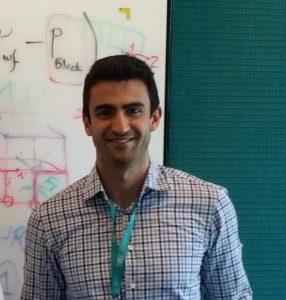
Abdelkerim Mokdad received his Engineering Degree in Geosciences Engineering from the University of Tunis El Manar, Tunisia, in 2019, in collaboration with MacEwan University, Edmonton. His undergraduate research at MacEwan was supported by the Mitacs Globalink Research Internship (GRI) award and was focused on the scaling of in-situ combustion-enhanced oil recovery process using reservoir simulation. Abdelkerim had several professional internships in multinational oil and gas companies such as OMV and Schlumberger. In September 2020, he joined the University of Alberta for his M.Sc at CCG under the supervision of Dr. Jeffery Boisvert, working on geostatistical estimations in mining.
Contact
Amir Mahdi Latifi
M.Sc. Graduate (2023)
 I received my B.Sc. in Mining Engineering from the University of Tehran, Iran, in 2020. My undergraduate research was focused on the modeling of machinery fleets under uncertainty using robust optimization techniques, including discrete event simulation tools.
I received my B.Sc. in Mining Engineering from the University of Tehran, Iran, in 2020. My undergraduate research was focused on the modeling of machinery fleets under uncertainty using robust optimization techniques, including discrete event simulation tools.
I started my master’s education under Dr. Jeff Boisvert’s supervision in 2021. My research focuses on studies of uncertainty in the estimation of mineral and hydrocarbon resources. Specifically, I am currently working on resolving differences in the quantification of uncertainty in 2D and 3D geostatistical modeling workflows, with a case study focusing on McMurray’s formation of Alberta. I try to explore how incorporating different aspects of parameter and structural uncertainty could affect the results of geological models and subsurface resource estimation. I currently focus on how these differences affect 2D and 3D geostatistical modeling workflows differently.
I also have more than three years of experience working as an engineering intern and research assistant in multiple companies in the areas of structural and civil engineering, geotechnical engineering, mining, and mineral engineering. I have experience working on the application of data science in engineering, mine design, mineral prospecting, and earthquake and structural integrity analysis.
Research
- Resolving uncertainty quantification between 2D and 3D geostatistical modeling workflows
- Optimization of two-point spatial correlation schemes
Publications
CCG Reports:
-
- Latifi, A.M. & Boisvert, J.B. (2021). Comparing Uncertainty Quantification Between 2D and 3D Geostatistical Modelling Workflows, CCG Paper 2021-125, Centre for Computational Geostatistics, University of Alberta, Edmonton, Canada
- Latifi, A.M. & Boisvert, J.B. (2021). Optimizing Sample Pairing to Maximize Correlation Between Wells/Drillholes When Calculating Variograms, CCG Paper 2021-126, Centre for Computational Geostatistics, University of Alberta, Edmonton, Canada
- Latifi, A.M. & Boisvert, J.B. (2021). Review of Stratigraphic Coordinate Transformation Workflows, CCG Paper 2021-153, Centre for Computational Geostatistics, University of Alberta, Edmonton, Canada
Contact
Ana Paula Chiquini
M.Sc. Graduate (2018)
Ana Paula Chiquini completed her B.Sc. in Geology from the University of São Paulo, Brazil, in 2011. Ana has 4 years of experience in the mining industry, having worked as a Resources Geologist at Yamana Gold Inc., before starting her M.Sc. studies at CCG in September 2016. As a Resources Geologist at Yamana, her main activities include mineral resources evaluation of gold, copper, polymetallic and porphyritic deposits and geological and ore modelling for underground and open pit mines, on both short and long terms.
Thesis
Publications
CCG Report
- Chiquini, A.P. & Deutsch, C.V. (2017). Resource Calculations with Mining Selectivity and Information Effect (CCG Annual Report 19). Edmonton, AB: University of Alberta.
- Chiquini, A.P. & Deutsch, C.V. (2017). Mining Selectivity Models for Different Deposit Types (CCG Annual Report 19). Edmonton, AB: University of Alberta.
- Chiquini, A.P. & Deutsch, C.V. (2017). Case Study on Probabilistic Resource Reporting (CCG Annual Report 19). Edmonton, AB: University of Alberta.
Contact
Brandon Wilde
M.Sc. Graduate (2010)
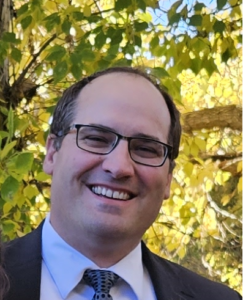 Before joining the CCG, I graduated from the U of A with a Bachelor of Science in Mining Engineering. Since completing my master’s I have worked as a Research Associate and am now doing consulting full-time with an emphasis on implementing advanced geostatistical techniques as Petrel plugins.
Before joining the CCG, I graduated from the U of A with a Bachelor of Science in Mining Engineering. Since completing my master’s I have worked as a Research Associate and am now doing consulting full-time with an emphasis on implementing advanced geostatistical techniques as Petrel plugins.
Thesis
Publications
CCG Guidebooks
- Wilde, B., 2011, Programs to Aid the Decision of Stationarity, CCG Guidebook Volume 14, Centre for Computational Geostatistics, University of Alberta, Edmonton, Canada
-
Wilde, B., 2010, Application of Spectral Techniques to Geostatistical Modeling, CCG Guidebook Volume 8, Centre for Computational Geostatistics, University of Alberta, Edmonton, Canada
Peer-Reviewed
- Wilde, B.J. and Deutsch, C.V., A Methodology for Quantifying Uncertainty versus Data Spacing Applied to the Oil sands, CIM Journal, May 2013 (15 pages)
- Deutsch, C.V. and Wilde, B.J., Modeling Multiple Coal Seams Using Signed Distance Functions and Global Kriging, International Journal of Coal Geology,112 (2013), pages 87-93
Contact
Brandon Wilson
M.Sc. Graduate (2020)
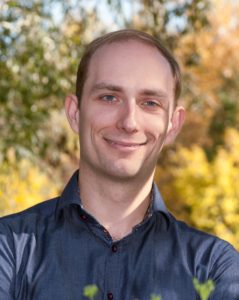 Brandon Wilson completed his BSc in Mining Engineering from the University of Alberta in 2015. Brandon has 2 years of experience in the mining industry, having worked as a co-op student at mines across Alberta and Saskatchewan before starting his MSc studies in September 2016. His work at the CCG began in late 2017. Brandon has experience as a surveyor, ventilation technician, and equipment operator with additional responsibilities ranging from haulage cost/benefit analysis to mining method configuration analysis.
Brandon Wilson completed his BSc in Mining Engineering from the University of Alberta in 2015. Brandon has 2 years of experience in the mining industry, having worked as a co-op student at mines across Alberta and Saskatchewan before starting his MSc studies in September 2016. His work at the CCG began in late 2017. Brandon has experience as a surveyor, ventilation technician, and equipment operator with additional responsibilities ranging from haulage cost/benefit analysis to mining method configuration analysis.
Research
- Scenario-based optimization of open pit planning
- Stochastic optimization of stope layouts: accounting for risk and non-linearities
Publications
Peer-Reviewed
- Wilson B, Boisvert J (2019) A heuristic approach to stochastic stope optimization. Mathematical Geosciences. (Submitted)
- Wilson B, Acorn T, Boisvert J (2019) Pit Optimization on Clustered Realizations: Identifying Functional Scenarios. Mining, Metallurgy and Exploration
Conference
- Wilson, B & Boisvert, J (2019). Stochastic Optimization of Stope Layouts. Presented at IAMG 2019, State College, PA, USA.
CCG Report
- Wilson B, Boisvert B (2019) Algorithm for Stochastic Stope optimization, CCG Paper 2019-303, Centre for Computational Geostatistics, University of Alberta, Edmonton, Canada
- Wilson B, Boisvert B (2019) Implementation of Stochastic Stope Optimization: a Case Study, CCG Paper 2019-304, Centre for Computational Geostatistics, University of Alberta, Edmonton, Canada
- Wilson B, Boisvert B (2019) Analysis of Parameters for Stochastic Stope Optimization, CCG Paper 2019-305, Centre for Computational Geostatistics, University of Alberta, Edmonton, Canada
- Wilson B, Acorn T & Boisvert J (2018) Scenario-Level Uncertainty: Exploring Realization Clustering, CCG Paper 2018-123, Centre for Computational Geostatistics, University of Alberta, Edmonton, Canada
- Wilson B, Acorn T & J Boisvert (2018) Considering Scenario-Level Uncertainty for Decision Making, CCG Paper 2018-124, Centre for Computational Geostatistics, University of Alberta, Edmonton, Canada
- Wilson B (2018) Stope Optimization: Planning Over All Realizations, CCG Paper 2018-315, Centre for Computational Geostatistics, University of Alberta, Edmonton, Canada
Contact
Bo Zhang
Ph.D. Graduate (2019)
Bo received his MSc in Petroleum Engineering at the University of Alberta with two publications about modelling bypassed oil recovery in EOS compositional simulation in June 2014. Bo also holds a BSc degree from China University of Petroleum (Beijing) in Petroleum Engineering. After 7 years of academic background in petroleum society, Bo decided to pursue his Ph.D. in Geotechnical Engineering under the co-supervision of Dr. Chalaturynk and Dr. Boisvert in July 2014. He will focus on developing a local numerical upscaling technique to describe the macroscopic plastic behavior of complex heterogeneous media.
Research
Thesis:
- Integrated Reservoir-Geomechanics Upscaling Workflow, 2019. Ph.D. Thesis, Department of Civil Engineering. University of Alberta.
- Modeling of Bypassed Oil Recovery in EOS Compositional Simulation, 2014. Master Thesis, Department of Civil Engineering. University of Alberta.
My current research interests include:
- Coupled reservoir-geomechanical simulation
- Upscaling of reservoir and geomechanical properties in heterogeneous reservoir
- Thermal recovery method
- Compositional simulation
- Phase behavior
Publications
Peer-review Journal
- Zhang, B. and Okuno, R., Modeling of capacitance flow behavior in EOS compositional simulation. Journal of Petroleum Science and Engineering, Volume 131(2015):96-113.
Conference Proceedings
- Zhang, B. and Okuno, R., A New Method for Modeling Bypassed Oil Recovery in EOS Compositional Simulation, SPE Annual Technical Conference and Exhibition to be held September 30 – October 2, 2013, New Orleans, LA, USA.
Contact
Caio Cardoso Gomes
M.Sc. Graduate (2023)
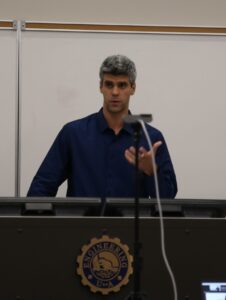
Geologist with 10 years of experience working in the Mining Industry in Brazil with iron ore and gold both for open-pit and underground projects and operations. Currently, studying and researching under Prof. Deutsch’s supervision and Prof. Jeff’s co-supervision. The research topic is Drill-hole Spacing (and placement) analysis, focused on Grade-Control stage and profit maximization.
Publications
- Gomes, C. G., & Boisvert, J. & Deutsch, C.V. (2022). Gaussian Mixture Models. In J. L. Deutsch (Ed.), Geostatistics Lessons. Retrieved from http://www.geostatisticslessons.com/lessons/gmm
- Caio Gomes, Jeff Boisvert and Clayton V. Deutsch, 2022, GradeControl Drillhole Spacing Analysis for maximizing Profit, CCG Paper 2022-133, Centre for Computational Geostatistics, University of Alberta, Edmonton, Canada
- Caio Gomes, Jeff Boisvert and Clayton V. Deutsch, 2022, A two-phase Drillhole Spacing Analysis targeted at OreWaste boundaries, CCG Paper 2022-134, Centre for Computational Geostatistics, University of Alberta, Edmonton, Canada
Contact
Cole Mooney
M.Sc. Graduate (2015)
I studied my undergrad in geology at UBC and I graduated in 2010. Before joining the CCG, I worked for Pretivm Resources as an exploration geologist and an underground mine geologist. Since leaving the CCG, I’ve returned to work with Pretivm Resources as a resource geologist.
Research
- Modeling heavy-tailed gold deposits with a spatial point process.
Thesis
Publications
- Mooney, C.R., Board, W., Boisvert, J.B. (2015) Modelling heavy-tailed coarse gold deposits with a spatial point process. CIM Journal, Vol. 6 (2), 118-131.
- Mooney, C.R., Board, W., Boisvert, J.B. (2016) Using a discrete fracture network and spatial point process to characterize veins in a coarse gold deposit. Natural Resources Research, Vol. 25 (3), 255–268
Contact
Carlos Prades
M.Sc. Graduate (2017)
Carlos completed his B.Sc. with a specialization in Geology from the University of Chile in 2008. He has worked for 8 years in the mining industry: 3 years as a production geologist, 2 years as an exploration geologist, and 3 years as a resource estimation geologist. He has worked for important mining companies like BHP Billiton (Minera Escondida) and Antofagasta Minerals S.A.
Thesis
Research
- Prediction and data mining for multivariate datasets using state-of-the-art machine learning methods.
- Applying tree-ensemble machine learning methods —random forests and gradient tree-boosted models— in geostatistical problems.
- Multivariate geostatistics focused on geometallurgical modelling.
Publications
- C. Prades and C. Deutsch (2016). Comparison of Machine Learning Techniques for Predicting and Learning from Geometallurgical Multivariate Databases. CCG Paper 2016-308, Centre for Computational Geostatistics, University of Alberta, Edmonton, Canada.
- C. Prades and C. Deutsch (2016). Presentation of Uncertainty and Sensitivity Analysis. CCG Paper 2016-408, Centre for Computational Geostatistics, University of Alberta, Edmonton, Canada.
Awards and Honours
- WAAIME —The Woman’s Auxiliary to the American Institute of Mining, Metallurgical, and Petroleum Engineering— scholarship award (2006 and 2007).
- Humberto Fuenzalida award by the Chilean Professional Geologist Association, for being the University of Chile´s most outstanding geology undergraduate between 2006 and 2008.
- Geologist professional degree obtained with “Highest Distinction” from the University of Chile (2008).
- Ranked 8/540 when graduated (2008), among a total of 540 students admitted to the University of Chile engineering faculty in 2001.
- University of Alberta Master’s Recruitment Scholarship Award (2015).
- Qualified by the University of Alberta for membership in the Golden Key International Honour Society for outstanding academic achievements (2016).
Contact
Chenyu Jiang
M.Sc. Graduate (2016)
Chenyu Jiang completed her B.Sc. in Mineral Resources Prospecting Engineering from China University of Geosciences (Beijing). She completed her M.Sc. in Mining Engineering in 2016.
Research
- Reservoir modeling for mineral deposits with the application of multiple-point statistics
- Parameters optimizations for the SNESIM program
- Solving the ordering issues in hierarchical simulation
Thesis
Publications
CCG Report
- Jiang and J.B. Boisvert, 2014, MPS modeling of a Porphyry Cu-Mo deposit with a large number of rock types, CCG Paper 2014-312, Centre for Computational Geostatistics, University of Alberta, Edmonton, Canada.
- Jiang and J.B. Boisvert, 2014, The impact of ordering on hierarchical simulation using multiple-point statistics, CCG Paper 2014-121, Centre for Computational Geostatistics, University of Alberta, Edmonton, Canada.
Contact
Chuks Anthony Sunday
M.Sc. Graduate (2022)
 Chuks completed his B.Sc in Petroleum Engineering from the University of Ibadan, Nigeria in 2012 and completed his M.Sc in Petroleum Engineering at the Africa University of Science and Technology, Abuja, Nigeria in 2016. Before joining the CCG, Chuks had 3 years of experience in Petroleum Production research, his undergraduate research was based on the IPR Model of Multilateral Wells, while his master’s thesis at AUST was focused on the ANN Model for Diagnosis & Mitigation of Water Production. He also did an internship at the Nigeria Petroleum Development Company (NPDC), where he worked as a field production engineer at the Shell/NPDC Egbema production facilities, in the Niger Delta, Nigeria. Chuks began his studies at the CCG, University of Alberta in January 2019, under the supervision of Dr. Clayton V. Deutsch.
Chuks completed his B.Sc in Petroleum Engineering from the University of Ibadan, Nigeria in 2012 and completed his M.Sc in Petroleum Engineering at the Africa University of Science and Technology, Abuja, Nigeria in 2016. Before joining the CCG, Chuks had 3 years of experience in Petroleum Production research, his undergraduate research was based on the IPR Model of Multilateral Wells, while his master’s thesis at AUST was focused on the ANN Model for Diagnosis & Mitigation of Water Production. He also did an internship at the Nigeria Petroleum Development Company (NPDC), where he worked as a field production engineer at the Shell/NPDC Egbema production facilities, in the Niger Delta, Nigeria. Chuks began his studies at the CCG, University of Alberta in January 2019, under the supervision of Dr. Clayton V. Deutsch.
Thesis
Research
- Multivariate Analysis for Response Surface Methods (RSM) Relative to Unconventional Reservoirs & Spatial Correlations.
- Resource/reserves estimation and uncertainty analysis.
Publication
CCG Report
- Sunday, C.A., & Deutsch, C.V (2019). Appropriate Discretization Level for Blocks. CCG Paper 2019-116, Centre for Computational Geostatistics, University of Alberta, Edmonton, Alberta, Canada.
Geostatistics Lessons
- Sunday, C.A., & Deutsch, C.V (2020). Choosing the Discretization Level for Block Property Estimation. In J. L. Deutsch (Ed.), Geostatistics Lessons. Retrieved from http://www.geostatisticslessons.com/lessons/discretization
Publication
Dhaniel Carvalho
M.Sc. Graduate (2018)
I received my BSc in Geology from the University of São Paulo, Brazil. For 5 years I’ve worked as a Resource Geologist (at Yamana Gold and Votorantim Metais) developing activities involving geological and ore modeling for underground and open pit mines, on both short and long terms; mineral resources evaluation of zinc, lead, nickel, aluminum, gold, copper, polymetallic gold and silver deposits; geostatistical simulation to support mineral resources classification; drill hole spacing analysis and drill hole planning. I joined the Centre for Computational Geostatistics (CCG) in 2016 to start my M.Sc.
Thesis
Research
- Vein Type Deposit Modeling
- Tonnage and Metal Uncertainty
- Unstructured Gridding
Publications
CCG Report
- Carvalho, D.A., Deutsch, C.V. (2017). A Framework for Tabular Vein Type Deposit Modeling. Centre for Computational Geostatistics Annual Report 19, Paper 308.
- Carvalho, D.A., Deutsch, C.V. (2017). Developments on Tabular Vein Geometry Modeling. Centre for Computational Geostatistics Annual Report 19, Paper 309.
- Carvalho, D.A., Deutsch, C.V. (2017). Imputation of Tabular Vein Geometry Data for Tonnage Uncertainty Assessment. Centre for Computational Geostatistics Annual Report 19, Paper 313.
Contact
Daniel Silva
Ph.D. Graduate (2015)
Dr. Silva is a mining engineer from Universidad de Chile currently pursuing a Ph.D. in mining engineering at the University of Alberta. Before joining the Centre for Computational Geostatistics Mr. Silva worked as a Geostatistician at AMEC based in Santiago, Chile conducting mineral resource-reserves evaluations and technical reports for pre-feasibility and feasibility projects in South and Central America.
Thesis
Research
The main area of research comprises developing advanced numerical modeling techniques for improved uncertainty characterization in mineral deposits. My particular interest lies on:
- Theory and applications of multiple point statistics algorithms to modeling complex geological settings in mineral deposits
- Hybrid multiple-point statistics models incorporating and integrating multiple training images for accurate forecasting of recoverable resources and reserves
Publications
- Silva DA, Emery X (2008) Geological control in grade simulation: A comparative study. In: Ortiz J, Emery X (eds) Eighth International Geostatistics Congress, Santiago. Gecamin, pp 789-798.
- Emery X, Silva DA (2009) Conditional co-simulation of continuous and categorical variables for geostatistical applications. Computers & Geosciences 35:1234-1246.
- Silva DA, Deutsch CV (2009) A multiple training image approach for spatial modeling of geologic domains. Mathematical Geosciences, DOI 10.1007/s11004-014-9543-0.
Thesis:
Contact
Diogo Silva
Ph.D.Graduate (2018)
Completed his B.Sc. in Mining Engineering in 2011 at the School of Engineering of the Federal University of Minas Gerais – Brazil where he was awarded the silver medal of academic merit. During his undergraduate studies, he worked mostly with mineral processing from variability studies to processing route definition. Completed his M.Sc. in Mining Engineering at the University of Alberta in 2014 and his Ph.D. in 2018.
Thesis
Research
- Categorical Modeling with Hierarchical Truncated Pluri-Gaussian
- Mineral Resource Classification
- Multivariate Geostatistical Modeling
Publications
Peer-review Journal
- Silva, D. S. F., and Boisvert, J. B., 2014. Mineral resource classification: a comparison of new and existing techniques. Journal of the Southern African Institute of Mining and Metallurgy, 114(3), 265-273.
- Silva, D. S., & Deutsch, C. V. Multiple imputation framework for data assignment in truncated pluri-Gaussian simulation. Stochastic Environmental Research and Risk Assessment, 1-13.
- Silva, D. S., & Deutsch, C. V. (2016). Multivariate data imputation using Gaussian mixture models. Spatial Statistics.
Conference
- Silva, D. S. F., and Boisvert, J. B., 2013. Mineral resource classification (NI 43-101): an overview and a new evaluation Technique. In 36th International Symposium on the Application of Computers and Operations Research in the Mineral Industry (APCOM 2013) , 315-323.
- Jewbali, A., Silva, D., Inglis, R., and Allen, L., 2017. Developing an Optimization Framework for Drill Hole Planning. In 38th International Symposium on the Application of Computers and Operations Research in the Mineral Industry (APCOM 2017) .
CCG Report
- Diogo S. F. Silva and Jeff B. Boisvert, 2013, Mineral Resource Classification (NI 43-101): An Overview and a New Evaluation Technique, CCG Paper 2013-307, Centre for Computational Geostatistics, University of Alberta, Edmonton, Canada.
- Diogo S. F. Silva and Jeff B. Boisvert, 2013, Mineral Resource Classification with Simulation at SMU Scale, CCG Paper 2013-308, Centre for Computational Geostatistics, University of Alberta, Edmonton, Canada.
- Diogo S. F. Silva and Jeff B. Boisvert, 2013, Infill Drilling Optimization for Maximizing Resource Tonnage, CCG Paper 2013-314, Centre for Computational Geostatistics, University of Alberta, Edmonton, Canada.
- Diogo S. F. Silva and Miguel A. Cuba, 2013, SpectralSim A program for Unconditional Spectral Simulation, CCG Paper 2013-410, Centre for Computational Geostatistics, University of Alberta, Edmonton, Canada.
- D. S. F. Silva and J. B. Boisvert, 2014, Evaluating the Impact of Low Quality Horizontal Well Data on Facies Modeling, CCG Paper 2014-208, Centre for Computational Geostatistics, University of Alberta, Edmonton, Canada.
- D. S. F. Silva and J. B. Boisvert, 2014, A Case Study on 3D Infill Drilling Optimization, CCG Paper 2014-304, Centre for Computational Geostatistics, University of Alberta, Edmonton, Canada.
- D. S. F. Silva and J. B. Boisvert, 2014, A Case Study on Resource Classification, CCG Paper 2014-305, Centre for Computational Geostatistics, University of Alberta, Edmonton, Canada.
- D. S. F. Silva and J. B. Boisvert, 2014, A Program for 3D Infill Drilling Optimization, CCG Paper 2014-403, Centre for Computational Geostatistics, University of Alberta, Edmonton, Canada.
- D. S. F. Silva and J. B. Boisvert, 2014, Two New Tools: Directional Survey to GSLIB XYZ Format and Drill Hole Spacing, CCG Paper 2014-404, Centre for Computational Geostatistics, University of Alberta, Edmonton, Canada.
- D. S. F. Silva and C. V. Deutsch, 2015, Multivariate Data Imputation using Gaussian Mixture Models, CCG Paper 2015-104, Centre for Computational Geostatistics, University of Alberta, Edmonton, Canada.
- D. S. F. Silva and C. V. Deutsch, 2015, Transformation for multivariate modeling using Gaussian mixtures with exhaustive secondary data, CCG Paper 2015-105, Centre for Computational Geostatistics, University of Alberta, Edmonton, Canada.
- D. S. F. Silva and C. V. Deutsch, 2015, Tool for univariate KDE with optimal bandwidth based on bootstrap, CCG Paper 2015-133, Centre for Computational Geostatistics, University of Alberta, Edmonton, Canada.
- D. S. F. Silva and C. V. Deutsch, 2015, Well / Drill Hole Prediction Tool, CCG Paper 2015-204, Centre for Computational Geostatistics, University of Alberta, Edmonton, Canada.
- D. S. F. Silva and C. V. Deutsch, 2015, Program for fitting Gaussian mixture models based on EM algorithm and geostatistical applications, CCG Paper 2015-407, Centre for Computational Geostatistics, University of Alberta, Edmonton, Canada.
- Diogo S.F. Silva and Clayton V. Deutsch, 2016, Hierarchical Approach to Truncated PluriGaussian Simulation, CCG Paper 2016-102, Centre for Computational Geostatistics, University of Alberta, Edmonton, Canada.
- Diogo S.F. Silva and Clayton V. Deutsch, 2016, Multiple Imputation Framework for Data Assignment in Truncated PluriGaussian Simulation, CCG Paper 2016-109, Centre for Computational Geostatistics, University of Alberta, Edmonton, Canada.
- Diogo S.F. Silva, Arja J. Jewbali, Jeff B. Boisvert and Clayton V. Deutsch, 2016, Drill Hole Placement Tool for Maximization of Resource Conversion, CCG Paper 2016-315, Centre for Computational Geostatistics, University of Alberta, Edmonton, Canada.
- Diogo S.F. Silva and Clayton V. Deutsch, 2016, Software for Gaussian Data Assignment in Truncated PluriGaussian Simulation, CCG Paper 2016-402, Centre for Computational Geostatistics, University of Alberta, Edmonton, Canada.
- Diogo S.F. Silva and Clayton V. Deutsch, 2016, Variogram Inference in Truncated PluriGaussian Simulation, CCG Paper 2016-409, Centre for Computational Geostatistics, University of Alberta, Edmonton, Canada.
- D. S. F. Silva and C. V. Deutsch, 2017, Multivariate Categorical Modeling using Hierarchical TPG, CCG Paper 2017-102, Centre for Computational Geostatistics, University of Alberta, Edmonton, Canada.
- D. S.F. Silva and C. V. Deutsch, 2017, Effects of Data Correlation on Multivariate Categorical Modeling, CCG Paper 2017-103, Centre for Computational Geostatistics, University of Alberta, Edmonton, Canada.
- D. S.F. Silva and C. V. Deutsch, 2017, Non-Stationarity and Variogram Reproduction for HTPG, CCG Paper 2017-128, Centre for Computational Geostatistics, University of Alberta, Edmonton, Canada.
- D. S.F. Silva and C. V. Deutsch, 2017, Tool for Grid Sensibility Analysis Utilizing DCHV, CCG Paper 2017-207, Centre for Computational Geostatistics, University of Alberta, Edmonton, Canada.
- D. S.F. Silva and C. V. Deutsch, 2017, Software Package for Hierarchical TPG, CCG Paper 2017-401, Centre for Computational Geostatistics, University of Alberta, Edmonton, Canada.
Contact
Di Yang
Ph.D.Graduate (2022)
Di Yang received his B.Sc. in geology at the China University of Petroleum (East China) in 2015 and completed his M.Sc. in geology at the China University of Petroleum (Beijing) in 2018. During his M.Sc., he did an internship at the Beijing Research Center of EXPEC ARC, Saudi Aramco. Di joined the CCG research group, started a Ph.D. program in 2018, and finished his PhD in May 2022 at the University of Alberta.
Thesis
Research
- Risk management in Reservoir Decision-making
Publications
Peer Reviewed:
- Yang, D., Li, Y. & Deutsch, C.V. Covariogram ranges for approximate global sensitivity analysis. Comput Geosci 26, 1397–1407 (2022). https://doi.org/10.1007/s10596-022-10167-1
- Yang, Di, and Clayton V. Deutsch. “Managing Risk in Well Placement Optimization within an Expected Utility Framework.” SPE Res Eval & Eng 26 (2023): 448–459. doi: https://doi.org/10.2118/212305-PA
Geostatistics Lesson:
- Yang, Di and Deutsch, C. V. (2019). Aggregating Multiple Secondary Variables into a Super Secondary Variable. In J. L. Deutsch (Ed.), Geostatistics Lessons. Retrieved from http://geostatisticslessons.com/lessons/supersecondary
CCG Papers:
- Di Yang, Yupeng Li and Clayton V. Deutsch, 2019, Covariance range for global sensitivity analysis, CCG Paper 2019-114, Centre for Computational Geostatistics, University of Alberta, Edmonton, Canada
- Di Yang and Clayton V. Deutsch, 2019, Review of aggregating variables into a super secondary variable, CCG Paper 2019-202, Centre for Computational Geostatistics, University of Alberta, Edmonton, Canada
- Di Yang and Clayton V. Deutsch, 2019, Relationship between quadratic loss function and utility function, CCG Paper 2019-203, Centre for Computational Geostatistics, University of Alberta, Edmonton, Canada
Contact
David Machuca-Mory
Ph.D. Graduate (2010)
Thesis:
Background Before Joining the CCG
- 2005 – 2011 Minería, Ingeniería y Construcción S.A.C (MICSAC), Associate Consultant and Co-founder, Lima, Peru
- 2000 – 2005 T-Matrix S.A.C., Project Manager and Co-founder. Lima, Peru
- 1999 – 2000 Compañía Minera Poderosa S.A, Junior Engineer, La Libertad, Peru
Occupations Since Leaving the CCG
- 2014 – Present SRK Consulting (Canada) Inc., Senior Consultant (Geostatistician), Toronto, Ontario, Canada
- 2010 – 2013 McGill University, Stochastic Mine Planning Laboratory, Research Associate. Montreal, Quebec, Canada
Current Research Interests
- Benchmarking and validation of Mineral resource models
- Geologically meaningful coordinate systems and their transformation
- High-order statistics
- Merging of machine learning with Geostatistics
Publications
Peer reviewed journal publications:
- Machuca-Mory, D.F. and Deutsch, C.V. (2013) A framework for non-stationary geostatistical modelling based on distance weighted statistics. Mathematical Geosciences, Volume 44, Issue 1, pp 31-48.
- Babak, O., Machuca-Mory, D.F. and Deutsch, C.V. (2010) An approximate method for joint sequential simulation of multiple spatial variables. Stochastic Environmental Research and Risk Assessment, Volume 24, Issue 3, pp 327-336.
- Chatterjee S., Bandopadhyay, S. and Machuca, D. (2010) Ore grade prediction using a genetic algorithm and clustering based ensemble neural network model. Mathematical Geosciences, Volume 42, Issue 3, pp 309-326.
- Machuca-Mory, D.F., Ortiz, J.M. and Deutsch, C.V. (2008) On the challenge of using sequential indicator simulation for the estimation of recoverable reserves. International Journal of Mining, Environment and Reclamation, Volume 22, Issue 4, pp. 285-299.
- Machuca-Mory, D.F., Babak, O. and Deutsch, C.V. (2008) Flexible change of support model suitable for a wide range of mineralization styles. Mining Engineering Magazine, February 2008.
- Chatterjee S., Bandopadhyay, S. and Machuca, D. (2008) Ore-waste classification of a lead-zinc deposits using support vector machines. SME Transactions, Volume 34, pp 309-326.
Peer reviewed conference papers:
- Machuca-Mory, D.F., Rees, H., and Leuangthong, O. Grade Modelling with Local Anisotropy Angles: A Practical Point of View. 37th International Symposium on the Application of Computers and Operation Research in the Mineral Industry (APCOM 2015), May 23-27, 2015, Fairbanks, AK.
- Machuca-Mory, D.F. and Dimitrakopoulos, R. High-order simulation of the structurally controlled Apensu gold deposit, Ghana. World Gold 2011, 3rd International Conference. Montreal, Québec. October 2-5, 2011.
- Machuca-Mory, D.F., Munroe M. and Deutsch, C.V. Tonnage uncertainty assessment of vein-type deposits using distance functions and location-dependent variograms. 34th conference on Application of Computers and Operation Research in the Mineral Industry, APCOM 2009, Vancouver, British Columbia. October 6-9, 2009.
- Machuca-Mory, D.F. and Deutsch, C.V. Location-dependent variograms. Proceedings paper and presentation. Eighth International Geostatistics Congress, GEOSTATS 2008, Santiago, Chile. December 1-5, 2008.
- Mondragón Dávila, A.E., Machuca-Mory, D.F., and Frías, O.E. Applications of three-dimensional modelling and geostatistics in mine planning at Atacocha Mine, Peru. Applications of Computers and Operations Research in the Mineral Industry, APCOM 2005. Tucson, Arizona. March 2005.
- Chatterjee, S. Bandopadhyay, S. and Machuca, D.F. Ore waste classification of a lead-zinc deposit using support vector machines. SME Annual Meeting, Salt Lake City, Utah. February 2008.
- Machuca-Mory, D.F., Tenorio, V.O., and Bandopadhyay, S. Assessment of the geostatistical uncertainty of the resources in a zinc ore body. VI International Symposium of Information Technology Applied to Mining. Infomina 2006. Lima, Peru. September 2006.
- Machuca-Mory, D.F., Ramirez Seminario, J. and Callupe, R. Sequential indicator simulation applied to the 3D modelling of rock mass index. First International Symposium of Geological, Geotechnical, and Environmental Engineering. Lima, Peru. August 27-28, 2005.
- Machuca-Mory, D.F. and Terrones, J. Conditional indicator simulation for building 3D ore body models. V International Symposium of Information Technology Applied to Mining. Infomina 2004. Lima, Peru. September 15-17, 2004.
- Machuca-Mory, D.F. and Frias Martinelli O.E. Uso de técnicas de modelado tridimensional y geoestadísticas en Compañía Minera Atacocha S.A. V Congreso Nacional de Minería. La Concepcion, Peru. March 2004.
- Machuca-Mory, D.F., Mustapha H, and Dimitrakopoulos, R. High-order stochastic simulation and application at a gold deposit. 7th Brazilian Congress on Open Pit Mining. Belo Horizonte, Brazil. July 10-12, 2012
- Machuca-Mory, D.F. and Dimitrakopoulos, R. Simulation of a structurally-controlled gold deposit using high-order statistics. Ninth International Geostatistics Congress, GEOSTATS 2012, Oslo, Norway. June 11-15, 2012.
CCG and COSMO reports:
- Machuca-Mory, D.F. and Dimitrakopoulos, R. (2013) High-order simulation at block-support scale. Stochastic Mine Planning Laboratory, Report 7.
- Machuca-Mory, D.F. and Dimitrakopoulos, R. (2012) High-order Simulation with Clustered Datasets: Application at Apensu Gold Deposit, Ghana. Stochastic Mine Planning Laboratory, Report 6.
- Machuca-Mory, D.F. and Dimitrakopoulos, R. (2012) High-order Spatial Direct and Cross-statistics for Categorical Attributes. Stochastic Mine Planning Laboratory, Report 6.
- Machuca-Mory, D.F. and Dimitrakopoulos, R. (2011) High-order Simulation of a Structurally Controlled Gold Deposit: Application at Apensu, South District of Ahafo, Ghana. Stochastic Mine Planning Laboratory, Report 5, pp. 59-84.
- Machuca-Mory, D.F. (2010) Joint fitting of local variograms in non-stationary Geostatistics. Centre for Computational Geostatistics, Report 12, Paper No. 117, 10 pages.
- Machuca-Mory, D.F. and Deutsch, C.V. (2009) Locally stationary multiGaussian kriging with change of support model. Centre for Computational Geostatistics, Report 11, Paper No. 104, 11 pages.
- Machuca-Mory, D.F. and Deutsch, C.V. (2009) Sequential Gaussian and indicator simulation with location-dependent distributions and statistics. Centre for Computational Geostatistics, Report 11, Paper No. 105, 12 pages.
- Machuca-Mory, D.F. and Deutsch, C.V. (2009) Validation and confirmation of non-stationary models with the Ventersdorp Reef data. Centre for Computational Geostatistics, Report 11, Paper No. 307, 8 pages.
- Machuca-Mory, D.F., Munroe, M. and Deutsch, C.V. (2009) Tonnage uncertainty assessment of vein-type deposits using distance functions and location-dependent correlograms. Centre for Computational Geostatistics, Report 11, Paper No. 311, 7 pages.
- Machuca-Mory, D.F., and Deutsch, C.V. (2008) Optimal weights for location-dependent moments. Centre for Computational Geostatistics, Report 10, Paper No. 108, 10 pages.
- Machuca-Mory, D.F., and Deutsch, C.V. (2008) Geostatistics with location-dependent moments and distributions. Centre for Computational Geostatistics, Report 10, Paper No. 109, 14 pages.
- Machuca-Mory, D.F., and Deutsch, C.V. (2008) Application of location-dependent moments in estimation and simulation. Centre for Computational Geostatistics, Report 10, Paper No. 128, 14 pages.
- Machuca-Mory, D.F., and Deutsch, C.V. (2007) Linear and nonlinear estimation based on training images. Centre for Computational Geostatistics, Report 9, Paper No. 111, 14 pages.
- Machuca-Mory, D.F., and Deutsch, C.V. (2007) Non-stationary variograms based on continuously varying weights. Centre for Computational Geostatistics, Report 9, Paper No. 117, 10 pages.
- Machuca-Mory, D.F., and Deutsch, C.V. (2007) Estimation with non-stationary first and second moments. Centre for Computational Geostatistics, Report 9, Paper No. 118, 12 pages.
- Machuca-Mory, D.F., Babak, O., and Deutsch, C.V. (2007) Flexible change of support model suitable for a wide range of mineralization Styles. Centre for Computational Geostatistics, Report 9, Paper No. 303, 16 pages.
- Machuca-Mory, D.F., Ortiz, J.M., and Deutsch, C.V. (2007) On the challenge of estimating recoverable reserves with sequential indicator simulation. Centre for Computational Geostatistics, Report 9, Paper No. 309, 12 pages.
- Machuca-Mory, D.F., Ortiz, J.M., and Deutsch, C.V. (2006) Excess variability in realizations of sequential indicator simulation of continuous variables. Centre for Computational Geostatistics, Report 8, Paper No. 307, 16 pages.
- Deutsch, C.V. and Machuca-Mory, D.F. (2006) Short Note: The maximum allowable variance to meet probabilistic resources classification. Centre for Computational Geostatistics, Report 8, Paper No. 308, 5 pages.
- Machuca-Mory, D.F., and Deutsch, C.V. (2006) A program for robust calculation of drill hole spacing in three dimensions. Centre for Computational Geostatistics, Report 8, Paper No. 309, 18 pages.
- Machuca-Mory, D.F., and Deutsch, C.V. (2006) Deriving indicator direct and cross variograms from a normal scores variogram model (bigauss-full). Centre for Computational Geostatistics, Report 8, Paper No. 404, 13 pages.
- Neufeld, C., Machuca-Mory, D.F., and Deutsch, C.V. (2006) Short note on co-kriging in sequential indicator simulation: The adjacent cut-off alternative. Centre for Computational Geostatistics, Report 8, Paper No. 405, 4 pages.
Contact
Eric Daniels
M.Sc. Graduate (2015)
Originally from Connecticut, USA, Eric received his Bachelor’s degree in geology from Colorado College in 2009. Since finishing his undergraduate degree Eric has gained experience as a professional geologist with a focus in hard rock mining and exploration. His work as a mine geologist at Cripple Creek and Victor Gold Mine served as an introduction to geostatistics. In his free time, Eric enjoys getting outside to the mountains or the ocean whenever possible.
Thesis
Research
Eric’s research is focused on managing uncertainty in a mining context, including:
- Software development for a flexible localization process
- Artifact reduction in localized models
- Local volume variance correction
- Utilizing multiple realizations in mine planning
Contact
Efrain Ugarte
M.Sc. Graduate (2018)
Efrain graduated with a B.Sc. in Geological Engineering from the National University of San Antonio Abad of Cusco-Peru and completed a Professional Master’s degree in Mineral Exploration at Colorado School of Mines in 2011. He worked for more than 13 years as an exploration, mining, and modeling geologist for some prestigious mining companies, Barrick and Newmont, Freeport-McMoRan, and Southern Peru. Efrain has experience in a variety of geological settings and commodities principally in gold, silver, copper, and molybdenum. He joined the CCG group in September 2015 and started a Master’s degree in Mining Engineering (Geostatistics).
Thesis
Research
- Optimal Extraction Layout for Block Caving with a Set of Stochastic Realizations
Publications
- E.Ugarte ,Y. Pourrahimian. J. Boisvert (2016). Comparison of Recoverable Reserves between Simulation and Kriging for Block Caving with Optimized Drawpoints. CCG Paper 2016-304, Centre for Computational Geostatistics, University of Alberta, Edmonton, Canada.
- E.Ugarte,Y. Pourrahimian and J. Boisvert (2016). Optimizing Drawpoints in Block Caving Layouts over a Set of Stochastic Realizations. CCG Paper 2016-305, Centre for Computational Geostatistics, University of Alberta, Edmonton, Canada.
Contact
Enrique Gallardo
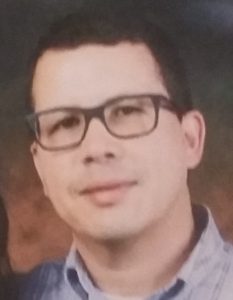 Ph.D. Graduate (2019)
Ph.D. Graduate (2019)
Enrique Gallardo is a senior reservoir engineer at the Colombian National Oil Company, Ecopetrol. He has 15+ years of experience as a reservoir engineer specializing in the assessment of oil & gas new ventures. He holds a PhD degree in mining engineering from the University of Alberta and a Master’s degree in Economics from the Javeriana University, Colombia.
Research
Enrique’s current research interests include geostatistics, decision-making in the presence of geological uncertainty, and the use of machine learning algorithms to improve reservoir characterization.
Publications
1. Gallardo, E., and Deutsch, C. V. (2018). Approximate Physics Discrete Simulation of the Steam-Chamber Evolution in SAGD. SPE Journal. SPE-194016-PA.
2. Gallardo, E., and Deutsch, C. V. (2018). Decision Making in Presence of Geological Uncertainty with Mean-Variance Criteria and Stochastic Dominance Rules. SPE Journal of Reservoir Evaluation. 197051-PA
3. Gallardo, E. (2019). Graph-Based Simulator for Steam-Assisted Gravity Drainage Reservoir Management. Ph.D. Dissertation at the University of Alberta.
4. Gallardo, E. et al. (2017). Probabilistic Methodology for the Classification and Selection of Intervals To Be Completed During the Exploratory Stage in Unconventional Reservoirs. ISG-2017-010 ISRM Conference Paper – 2017
5. Gallardo, E., Deutsch, C.V. (2017). Active Geological Risk Management Case Study: Vertical Placement of Well Pairs in SAGD. Paper 203, CCG Annual Report 19, 2017.
6. Gallardo, E., Deutsch, C.V. (2017). Advances on 3D Modeling of SAGD Steam Chambers using graph and discrete simulation concepts. Paper 204, CCG Annual Report 19, 2017.
7. Gallardo, E., Deutsch, C.V. (2017). Discussion on the modeling of the steam chamber in SAGD based on Geometrical Principles. Paper 112, CCG Annual Report 19, 2017.
8. Gallardo, E., Deutsch, C.V. (2017). Active geological risk management in petroleum reservoir operations. Paper 213, CCG Annual Report 19, 2017.
9. Gallardo, E., Deutsch, C.V. (2016). White Paper on Decision Making using Geostatistics. Paper 103, CCG Annual Report 18, 2016.
10. Gallardo, E., Deutsch, C.V. (2016). A New Proxy for Modeling the Evolution of the Steam Chamber in SAGD. Paper 204, CCG Annual Report 18, 2016.
11. Gallardo, E., Deutsch, C.V. (2016). SAGD Performance from the New Proxy: A Coupled Semi-Analytical Model. Paper 205, CCG Annual Report 18, 2016.
12. Support vector classification for geostatistical modeling of categorical variables. MSc. Thesis at the University of Alberta.
13. Gallardo, E., Leuangthong, O., (2009). An Introduction to Support Vector Classification for Geostatistical Applications. Paper 114, CCG Annual Report 11, 2009.
14. Gallardo, E., Leuangthong, O., (2009). Heuristic Support Vector Classification for Categorical Data. Paper 117, CCG Annual Report 11, 2009.
15. Gallardo, E., Leuangthong, O., (2009). A Hybrid Approach to Model Selection for Support Vector Classification for Categorical Data. Paper 118, CCG Annual Report 11, 2009
Contact
Enrique Gallardo
e-mail:
Fabio Pereira
M.Sc. Graduate (2022)
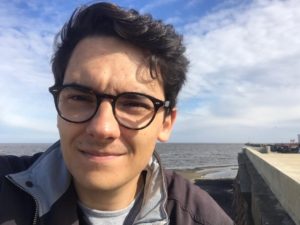 Fábio Pereira completed his Mining Engineering B.Sc. in the Federal University of Minas Gerais (UFMG), Brazil in 2019. He has experience as an undergraduate research assistant, working at a rock mechanics laboratory. He worked on research projects making statistical analyses of rock properties and also helped to conduct and analyze tests for mining companies. He started his M.Sc. at CCG in January 2020 under the supervision of Dr. Clayton Deutsch.
Fábio Pereira completed his Mining Engineering B.Sc. in the Federal University of Minas Gerais (UFMG), Brazil in 2019. He has experience as an undergraduate research assistant, working at a rock mechanics laboratory. He worked on research projects making statistical analyses of rock properties and also helped to conduct and analyze tests for mining companies. He started his M.Sc. at CCG in January 2020 under the supervision of Dr. Clayton Deutsch.
Thesis
Research
- Realistic characterization of non-gaussian regionalized random variables
Contact
Felipe Alfredo Cabral Pinto
Ph.D. Graduate (2020)
I started my studies in Geology at the Federal University of Ouro Preto (MG, Brazil), changing a few months later to Mining Engineering at the Federal University of Minas Gerais (MG, Brazil) where I graduated in 2013. During my undergraduate studies, I attended the last year of the Geology program at the École Nationale Supérieure de Géologie de Nancy (France) where I fell in love with Geostatistics and resource modeling. I completed my M.Sc. in Mining Engineering at the University of Alberta in August of 2016. I currently work as a Geostatistical Summer Student at Teck Resources Limited.
Thesis
- Cabral Pinto, F., 2020, Indpendent Factor Simulation for Improved Multivariate Geostatistics, Ph.D. Thesis, University of Alberta, Edmonton, Canada
Research
- Data spacing and uncertainty
- Factors and parameters affecting data spacing and uncertainty
- The Value of Information
Publications
Conference
- Pinto, F.A.C. and Deutsch, V.C. (2015) Expected Uncertainty as a Function of the Variogram, Data Spacing and Other Factors, presented at 37th International Symposium on Application of Computers and Operations Research in the Mineral Industry (APCOM ) in Fairbanks, Alaska, USA, 1149 pp.
CCG Report
- F. A. C. Pinto and Clayton V. Deutsch, 2015, Methodology and Interpretation of Data Spacing and Uncertainty, CCG Paper 2015-302, Centre for Computational Geostatistics, University of Alberta, Edmonton, Canada.
- F. A. C. Pinto, Kevin Palmer and Clayton V. Deutsch, 2015, Case Study on Data Spacing and Uncertainty, CCG Paper 2015-303, Centre for Computational Geostatistics, University of Alberta, Edmonton, Canada.
- F. A. C. Pinto and Clayton V. Deutsch, 2015, Software Useful for Data Spacing Analysis, CCG Paper 2015-406, Centre for Computational Geostatistics, University of Alberta, Edmonton, Canada.
- F. A. C. Pinto , 2015, Guide to Data Spacing and Uncertainty Analysis, CCG Guidebook Volume 19, Centre for Computational Geostatistics, University of Alberta, Edmonton, Canada.
- F. A. C. Pinto & C. V. Deutsch, 2014, Factors Influencing Data Spacing and Uncertainty, CCG Paper 2014-117, Centre for Computational Geostatistics, University of Alberta, Edmonton, Canada.
- F. A. C. Pinto & C. V. Deutsch, 2014, Thoughts on Data Spacing, Uncertainty and the Value of Information, CCG Paper 2014-118, Centre for Computational Geostatistics, University of Alberta, Edmonton, Canada.
- F. A. C. Pinto & C. V. Deutsch, 2014, Calculating the Proportional Effect Based on the Univariate Distribution, CCG Paper 2014-407, Centre for Computational Geostatistics, University of Alberta, Edmonton, Canada.
Contact
Fernando Camana Calderon
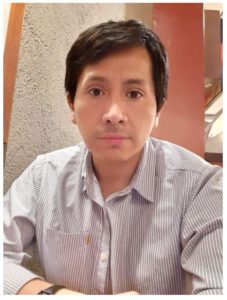 M.Sc. Graduate (2022)
M.Sc. Graduate (2022)
Fernando Camana Calderon completed his B.Sc. in Geological Engineering from the National University of Engineering, Peru, in 2002. He has over 15 years of experience in the mining industry most of them dedicated to geological modeling, resource estimation, ore control processes, and mine planning. In 2014, he completed the Citation Program in Applied Geostatistics and in 2019 started his M.Sc. at the University of Alberta under the supervision of Dr. Clayton Deutsch.
Thesis
Publications
CCG Report
- Camana, F.A. & Deutsch, C.V. (2019). Optimal estimation of grid size to improve profits in grade control models (CCG Annual Report 21). Edmonton, AB: University of Alberta.
Geostatistics Lessons
- Camana, F.A. & Deutsch, C.V. (2019). The Nugget effect. In J. L. Deutsch (Ed.), Geostatistics Lessons. Retrieved from http://geostatisticslessons.com/lessons/nuggeteffect
Contact
George Barros
Ph.D. Graduate (2019)

George graduated with a Bachelor’s Degree in Geology from the University of Sao Paulo, Brazil. In 2001, he completed his Master’s Degree in Mineral Resources at the same university. George has more than ten years of experience in the oil/gas industry as a reservoir geologist at the Research Center in the Brazilian Oil Company (Petrobras), Rio de Janeiro, Brazil.
In March 2015, George joined the Centre for Computational Geostatistics (CCG) at the University of Alberta as a PhD student and his main research focus is Petroleum Geostatistics.
Thesis
Research
- Geostatistical Reservoir Modeling
- Reservoir Characterization
- Static and Dynamic Data Integration
Publications
- Barros and Deutsch (2015). Optimal Ordering of Realizations for Visualization and Presentation, CCG Paper 2015-102, Centre for Computational Geostatistics, University of Alberta, Edmonton, Canada
- Barros and Deutsch (2016). Rejection Sampling to Well Test Data – an Extension, CCG Paper 2016-209, Centre for Computational Geostatistics, University of Alberta, Edmonton, Canada
- Barros and Deutsch (2016). Rejection Sampling for Large Scale Averages – Proof of Concept, CCG Paper 2016-208, Centre for Computational Geostatistics, University of Alberta, Edmonton, Canada
- Barros and Deutsch (2016). Some Thoughts on Using All Realizations for Reservoir Management, CCG Paper 2016-202, Centre for Computational Geostatistics, University of Alberta, Edmonton, Canada
- Barros and Deutsch (2017). Methodology for Well Test Integration, CCG Paper 2017-210, Centre for Computational Geostatistics, University of Alberta, Edmonton, Canada
- Barros and Deutsch (2017). Developments in Visualization of Multiple Realizations Considering Categorical Variables, CCG Paper 2017-402, Centre for Computational Geostatistics, University of Alberta, Edmonton,
- Barros and Deutsch (2017). Case Study on Well Test Data Integration, CCG Paper 2017-211, Centre for Computational Geostatistics, University of Alberta, Edmonton, Canada
- Barros and Deutsch (2017). Management of Multiple Realizations through the Lifecycle of Reservoir, CCG Paper 2017-201, Centre for Computational Geostatistics, University of Alberta, Edmonton, Canada
- Barros and Deutsch (2018). Using All Realizations in Reservoir Management, CCG Paper 2018-209, Centre for Computational Geostatistics, University of Alberta, Edmonton, Canada
- Barros and Deutsch (2018). Sensitivity Analysis and Impact in the Economic Performance Considering Multiple Realizations, CCG Paper 2018-203, Centre for Computational Geostatistics, University of Alberta, Edmonton, Canada
- Barros and Deutsch (2018). Comparative study about using all realizations over a P50 model, CCG Paper 2018-202, Centre for Computational Geostatistics, University of Alberta, Edmonton, Canada
- Barros, G.; Deutsch, C.V. (2018). Using All Realizations in Reservoir Management. Centre for Computational Geostatistics (CCG). Paper 209, CCG Annual Report 20.
- Barros, G.; Deutsch, C.V. (2017a). Optimal ordering of realizations for visualization and presentation. Computers & Geosciences 103(2017): pp.51-58.
Contact
Hanh Nguyen
M.Sc. Graduate (2002)

Thesis
Contact
Haoze Zhang
M.Sc. Graduate (2021)
 Haoze Zhang completed his B.Sc. in Geology from the University of Calgary in 2019. Haoze has 2 years of experience in Geophysics research during his undergraduate degree, before his M.Sc. studies at CCG in September 2019. As a research assistant at the University of Calgary, his main contribution was incorporating regularization into the Bayesian Inversion algorithm, which improves the subsurface structure exploration using seismic data. He also identified errors in published papers and fixed the algorithms accordingly. As a Master’s student in CCG, his research focuses on multivariate data exploratory analysis, including the missing data, below-detection limit data analysis, and cluster analysis for geometallurgical data. By implementing various techniques, he also develops strong Python coding skills.
Haoze Zhang completed his B.Sc. in Geology from the University of Calgary in 2019. Haoze has 2 years of experience in Geophysics research during his undergraduate degree, before his M.Sc. studies at CCG in September 2019. As a research assistant at the University of Calgary, his main contribution was incorporating regularization into the Bayesian Inversion algorithm, which improves the subsurface structure exploration using seismic data. He also identified errors in published papers and fixed the algorithms accordingly. As a Master’s student in CCG, his research focuses on multivariate data exploratory analysis, including the missing data, below-detection limit data analysis, and cluster analysis for geometallurgical data. By implementing various techniques, he also develops strong Python coding skills.
Thesis
Publications
- Zhang, H., Erten, O. & Deutsch, C.V. (2020). Bayesian Updating for Combining Conditional Distributions. In J.L. Deutsch (Ed.), Geostatistics Lessons. Retrieved from http://www.geostatisticslessons.com/lessons/bayesianupdating
Contact
Harold Velasquez Sanchez
M.Sc. Graduate (2023)
 Harold completed his B.Sc. in Geological Engineering at the National University of Engineering (UNI) – Peru in 2015. He has 5+ years of experience in the mining industry, working in Cu-Mo porphyry (Toquepala), high-sulfidation Au, and Cu-Zn skarn deposits. He was awarded within Ideaventura program in Buenaventura Mining Company where he worked as a geotechnical engineer and Ideas with Value program in Antamina where he worked as an ore control geologist. In 2021 he joined the CCG to begin his M.Sc studies with Dr. Clayton Deutsch.
Harold completed his B.Sc. in Geological Engineering at the National University of Engineering (UNI) – Peru in 2015. He has 5+ years of experience in the mining industry, working in Cu-Mo porphyry (Toquepala), high-sulfidation Au, and Cu-Zn skarn deposits. He was awarded within Ideaventura program in Buenaventura Mining Company where he worked as a geotechnical engineer and Ideas with Value program in Antamina where he worked as an ore control geologist. In 2021 he joined the CCG to begin his M.Sc studies with Dr. Clayton Deutsch.
Thesis
Publications
CCG Report
- Velasquez, H.G. & Deutsch, C.V. (2021). Short Note on the Comparison of Ordinary and Multi-Gaussian Kriging for Surface Mapping, CCG Paper 2021-127. Centre for Computational Geostatistics, University of Alberta, Edmonton, Canada
- Velasquez, H.G. & Deutsch, C.V. (2021). Short Note on a Prospective Variational Principle with Divergence under Bounded Rationality Theory, CCG Paper 2021-129. Centre for Computational Geostatistics, University of Alberta, Edmonton, Canada
- Velasquez, H.G. & Deutsch, C.V. (2021). Number and Structure of Truncation Trees in Hierarchical Truncated PluriGaussian, CCG Paper 2021-128. Centre for Computational Geostatistics, University of Alberta, Edmonton, Canada
Geostatistics Lessons
- Velasquez, H. G. & Deutsch, C. V. (2021). Decision Making in the Presence of Geological Uncertainty. In J. L. Deutsch (Ed.), Geostatistics Lessons. Retrieved from http://www.geostatisticslessons.com/lessons/decisionmaking
Contact
Jared Deutsch
Ph.D. Graduate (2015)
Background Before Joining the CCG

Jared graduated with a BSc in Materials Engineering from the University of Alberta focusing on mineral processing and extractive metallurgy. He then completed a MASc in Materials Engineering at the University of British Columbia studying hydrometallurgy and a PhD at the Centre for Computational Geostatistics with a focus on geometallurgy. The focus of his research included the spatial modeling of metallurgical variables and the application of these models.
Occupations Since Leaving the CCG
After CCG, Jared was a statistician and geometallurgist at Newmont Mining Corporation. Jared is currently President of Resource Modeling Solutions, a geostatistical and geometallurgical modeling company that is part of GeologicAI. Jared continues to be the editor of Geostatistics Lessons.
Thesis
Research Interests
- Geostatistical modeling of nonlinear metallurgical variables
- Downscaling large metallurgical indices for high-resolution modeling
- Application and optimization of spatial geometallurgical models
Publications
- Deutsch, J.L., Palmer, K., Deutsch, C.V., Szymanski, J. and Etsell, T.H. (2015) Spatial Modeling of Geometallurgical Properties: Techniques and a Case Study, Accepted for publication in Natural Resources Research, 21 pp.
- Deutsch, J.L., Szymanski, J. and Deutsch, C.V. (2014) Checks and measures of performance for kriging estimates, Accepted for publication in the Journal of the Southern African Institute of Mining and Metallurgy, 8 pp.
- Deutsch, J.L., and Deutsch, C.V. (2013) A multidimensional scaling approach to enforce reproduction of transition probabilities in truncated plurigaussian simulation, Stochastic Environmental Research and Risk Assessment, 2013.
- Deutsch, J.L., and Dreisinger, D.B. (2013) Silver Sulfide Leaching with Thiosulfate in the Presence of Additives Part I: Copper-Ammonia Leaching, Hydrometallurgy 137, 156-164.
- Deutsch, J.L., and Dreisinger, D.B. (2013) Silver Sulfide Leaching with Thiosulfate in the Presence of Additives Part II: Ferric Complexes and the Application to Silver Sulfide Ore, Hydrometallurgy 137, 165-172.
- Deutsch, J.L. (2012) Fundamental aspects of thiosulfate leaching of silver sulfide in the presence of additives, MASc Thesis, University of British Columbia, Vancouver, 126 pp.
- Deutsch, J.L., Boisvert, J.B. and Deutsch, C.V. (2011) A New Dimension to Account for Data Error and Scale, 2011 Transactions of the Society of Mining, Metallurgy, and Engineering 330, 598-605.
- Deutsch, J.L and Deutsch, C.V. (2011) Latin Hypercube Sampling with Multidimensional Uniformity, Journal of Statistical Planning and Inference 142(3), 763-772.
- Deutsch, J.L. and Deutsch, C.V. (2011) Plotting and checking the bivariate distributions of multiple Gaussian data, Computers and Geosciences 37(10), 1677-1684.
Contact
Jason McLennan
Ph.D. Graduate (2007)
Background Before Joining the CCG
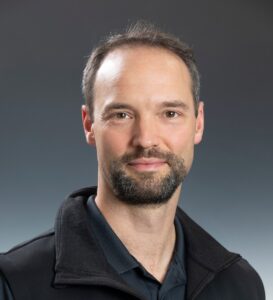
BSc in Mining Engineering, University of Alberta
Occupations Since Leaving the CCG
- Surmont Implementation Supervisor, ConocoPhillips, February 2024 to present, Calgary, Alberta area.
- CD5 Project Integration Manager, ConocoPhillips, August 2015 – Present, Anchorage, Alaska Area
- Senior Reservoir Engineer, ConocoPhillips, August 2011 – Present, Anchorage, Alaska Area
- Analyst, ConocoPhillips, February 2010 – July 2011, Houston, Texas Area
- Senior Geomodeler, ConocoPhillips, May 2007 – January 2010, Houston, Texas Area
Thesis
Contact
Jeremy Vincent
M.Sc. Graduate (2021)
 Jeremy completed his B.Sc. in Earth and Ocean Sciences from the University of Victoria, Canada, in 2005. He has over 14 years of experience in the mining industry, the bulk of which have focused on resource estimation for advanced exploration and mining projects. In 2014, Jeremy completed the Citation Program in Applied Geostatistics at the CCG while managing the mineral resource estimation, grade control, and mine reconciliation processes for Capstone Mining Corp’s mines. In 2018, he returned to the CCG to begin his M.Sc studies under the supervision of Dr. Clayton Deutsch.
Jeremy completed his B.Sc. in Earth and Ocean Sciences from the University of Victoria, Canada, in 2005. He has over 14 years of experience in the mining industry, the bulk of which have focused on resource estimation for advanced exploration and mining projects. In 2014, Jeremy completed the Citation Program in Applied Geostatistics at the CCG while managing the mineral resource estimation, grade control, and mine reconciliation processes for Capstone Mining Corp’s mines. In 2018, he returned to the CCG to begin his M.Sc studies under the supervision of Dr. Clayton Deutsch.
Thesis
Publications
CCG Report
- Vincent, J.D. & Deutsch, C.V. (2019). Review of the Spatial Bootstrap for Histogram Uncertainty (CCG Annual Report 21). Edmonton, AB: University of Alberta.
- Vincent, J.D. & Deutsch, C.V. (2019). Multiple Indicator Kriging – Future Developments (CCG Annual Report 21). Edmonton, AB: University of Alberta.
- Vincent, J.D. & Deutsch, C.V. (2019). Multiple Indicator Kriging – A Review of Good Practice (CCG Annual Report 21). Edmonton, AB: University of Alberta.
Geostatistics Lessons
- Vincent, J.D. & Deutsch, C.V. (2019). The Multivariate Spatial Bootstrap. In J. L. Deutsch (Ed.), Geostatistics Lessons. Retrieved from http://www.geostatisticslessons.com/lessons/spatialbootstrap
Contact
Jianan Qu
Ph.D. Graduate(2018)
- Master, China University of Geosciences (Beijing), 09/2010-07/2013
- Ph.D, University of Alberta, 2013-2018
Thesis
Research
- Trend Modeling
- Sequential Gaussian Simulation on Trends
Publications
- Wang, G., Pang, Z., Boisvert, J. B., Hao, Y., Cao, Y., & Qu, J. (2013). Quantitative assessment of mineral resources by combining geostatistics and fractal methods in the Tongshan porphyry Cu deposit (China). Journal of Geochemical Exploration, 134, 85-98.
Contact
Jing Bai
M.Sc Graduate (2022)
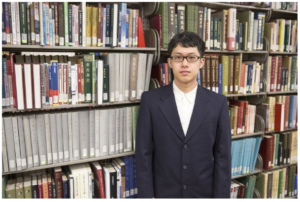 Jing Bai completed his BASc. In Lassonde Mineral Engineering from the University of Toronto, Canada, in 2019. He also had a minor in biology and a minor in statistics. He had some research experience with rock mechanical properties. He started his M.Sc. studies at CCG in September 2019.
Jing Bai completed his BASc. In Lassonde Mineral Engineering from the University of Toronto, Canada, in 2019. He also had a minor in biology and a minor in statistics. He had some research experience with rock mechanical properties. He started his M.Sc. studies at CCG in September 2019.
Research
- Tabular deposit probabilistic modeling
Contact
Jinpyo Kim
M.Sc. Graduate (2023)
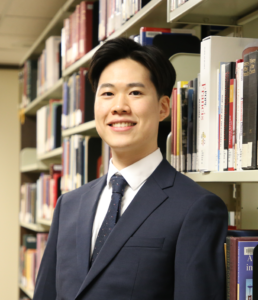 Jinpyo completed his B.Sc. in Petroleum and Mining Engineering from Inha University, the Republic of Korea, in 2021. He has experience working as an undergraduate research assistant, working at an Unconventional resources laboratory helping interpret well logs data, and researching unconventional resource development methods. He also worked as an underground mining engineer at the planning and design department in Mexico for 9 months. He started his M.Sc. degree at the CCG, University of Alberta in September 2021 with Dr.Clayton Deutsch.
Jinpyo completed his B.Sc. in Petroleum and Mining Engineering from Inha University, the Republic of Korea, in 2021. He has experience working as an undergraduate research assistant, working at an Unconventional resources laboratory helping interpret well logs data, and researching unconventional resource development methods. He also worked as an underground mining engineer at the planning and design department in Mexico for 9 months. He started his M.Sc. degree at the CCG, University of Alberta in September 2021 with Dr.Clayton Deutsch.
Thesis
-
Kim, J., 2023, Improved Resource Estimates with Multiple Data Types, M.Sc., Thesis, University of Alberta, Edmonton, Canada
Contact
Julian Ortiz
 Ph.D. Graduate (2003)
Ph.D. Graduate (2003)
Dr. Julian Ortiz is the Mark Cuifani / Anglo American Chair in Mining Innovation at Camborne School of Mines, where he focuses on geostatistics and predictive geometallurgy, developing algorithms for numerical modeling of geoscientific and mine production data to model the mineral resources and mining processes, predict performance and manage risk, associated to all stages of the extraction and processing of the materials mined. He received a B.Sc. in Mining Engineering from Universidad de Chile (Chile), and completed a Ph.D. in Mining Engineering, specializing in Geostatistics, from the University of Alberta (Canada). Subsequently, he worked at Universidad de Chile, becoming Head of Department and Deputy Director of the Advanced Mining Technology Center (AMTC). He founded the Advanced Laboratory for Geostatistical Supercomputing (ALGES) and led several large projects with public and private funding (CSIRO, BHP Billiton, Yamana Gold, AMTC, Innova, Fondecyt). He then moved to Queen’s University in Ontario, Canada, where he was Associate Professor and Head of Department and led the Predictive Geometallurgy and Geostatistics Lab. Dr. Ortiz also founded Octal, a consulting company for specialized resource modeling in Chile, and the startup APMT in Canada, which specializes in workflow automation and advanced algorithms in resource modeling and mine planning, where he is currently Director and Principal Consultant.
Thesis
- Ortiz, J., 2003, Characterization of High Order Correlation for Enhanced Indicator Simulation, Ph.D. Thesis, University of Alberta, Edmonton, Canada
- Ortiz JM (1998) Estimation of economic losses due to poor blast hole sampling (Estimación de pérdidas por muestreo deficiente en pozos de tronadura), Undergraduate (Mining Engineering) Thesis, Facultad de Ciencias Físicas y Matemáticas, Universidad de Chil
Career Highlights
- Significant experience in Research and Development, generating research funds, directing large research grants, and leading multidisciplinary teams. Participated as deputy director of the Advanced Mining Technology Center at Universidad de Chile.
- Extensive experience in teaching and training professionals, with over 70 short courses taught, in Chile, Argentina, and Australia. Past head of the Department of Mining Engineering at Universidad de Chile, has been involved as academic coordinator of M.Sc. and Ph.D. programs in Mining Engineering.
- 18 years of consulting experience in geostatistical assessment of geological resources in copper, gold, silver, and iron ore, with clients such as Codelco, BHP Billiton, Antofagasta Minerals, Anglo American, Peñoles, and Barrick. International experience with projects in Chile, Argentina, Mexico, Uruguay, Brazil, Peru, and Canada.
- Member of the technical board at Escondida, the largest operating copper mine in the world.
Publications
Peer review journal articles:
- Riquelme AI, Ortiz JM (2024) A Riemannian tool for clustering of geo-spatial multivariate data, Mathematical Geosciences, 56: 121-141. https://doi.org/10.1007/s11004-023-10085-7
- Ortiz JM, *Avalos S, *Riquelme AI, Leuangthong O, Madani N (2023) Uncertainty and value: optimising geometallurgical performance along the mining value chain, Elements, 19(6): 377-383, https://doi.org/10.2138/gselements.19.6.377
- *Koruk K, Ortiz JM (2023) Geological domaining with unsupervised clustering and ensemble support vector classification, Mining, Metallurgy & Exploration, 40: 2537-2549. https://doi.org/10.1007/s42461-023-00858-3
- *Jelvez E, Ortiz JM, Morales N, Askari-Nasab H, Nelis G (2023) A multi-stage methodology for long-term open-pit mine production planning under ore grade uncertainty, Mathematics, 11: 3907. https://doi.org/10.3390/math11183907
- *Moraga C, Kracht W, Ortiz JM (2023) Water consumption assessment in mineral processing integrating weather information and geometallurgical modeling, Minerals Engineering, 201: 108162. https://doi.org/10.1016/j.mineng.2023.108162
- *Avalos S, Ortiz JM (2023) Spatial Multivariate Morphing Transformation, Mathematical Geosciences, 55(6): 735-771. https://link.springer.com/article/10.1007/s11004-023-10058-w
- *Avalos S, Ortiz JM (2023) Multivariate geostatistical simulation and deep Q-Learning to optimize mining decisions, Mathematical Geosciences, 55(5): 673-692. https://link.springer.com/article/10.1007/s11004-023-10049-x
- *Moraga C, Kracht W, Ortiz JM (2022) Process simulation to determine blending and residence time distribution in mineral processing plants, Minerals Engineering, 187: 107807. https://doi.org/10.1016/
j.mineng.2022.107807
- *Jelvez E, Morales N, Ortiz JM (2022) Stochastic final pit limits: an efficient frontier analysis under geological uncertainty in the open-pit mining industry, Mathematics, 10(1): 100. https://doi.org/10.3390/math10010100
- *Cevik IS, Leuangthong O, Cate A, Ortiz JM (2021) On the use of machine learning for mineral resource classification, Mining, Metallurgy & Exploration, 38:2055-2073. https://doi.org/10.1007/s42461-021-00478-9
- *Faraj F, Ortiz JM (2021) A simple unsupervised classification workflow for defining geological domains using multivariate data, Mining, Metallurgy & Exploration, 38: 1609-1623. https://doi.org/10.1007/s42461-021-00428-5
- *Riquelme AI, Ortiz JM (2021) Uncertainty assessment over any volume without simulation: revisiting multi-Gaussian kriging, Mathematical Geosciences, 53:1375-1405. https://doi.org/10.1007/s11004-020-09907-9 (Correction: https://doi.org/10.1007/s11004-021-09927-z)
- *Cevik IS, Ortiz JM, Olivo GR (2021) A combined multivariate approach analyzing geochemical data for knowledge discovery: the Vazante-Paracatu Zinc district, Minas Gerais, Brazil, Journal of Geochemical Exploration, Vol. 221, 106696. https://doi.org/10.1016/j.gexplo.2020.106696
- *Avalos SA, Kracht W, Ortiz JM (2020) An LSTM approach to SAG mill operational relative-hardness prediction, Minerals, 10 (9), 734. https://doi.org/10.3390/min10090734
- *Avalos S, Ortiz JM (2020) Recursive Convolutional Neural Networks in a Multiple-Point Statistics framework, Computers & Geosciences, 141, 104522. https://doi.org/10.1016/j.cageo.2020.104522
- *Avalos SA, Kracht W, Ortiz JM (2020) Machine Learning and Deep Learning Methods in Mining Operations: a Data-Driven SAG Mill Energy Consumption Prediction Application, Mining, Metallurgy & Exploration, 37(4):1197-1212. https://doi.org/10.1007/s42461-020-00238-1
- *Garrido M, Sepulveda E, Ortiz JM, Townley B (2020) Simulation of Synthetic Exploration and Geometallurgical Database of Porphyry Copper Deposits for Educational Purposes, Natural Resources Research, 29: 3527-3545. https://doi.org/10.1007/s11053-020-09692-6
- *Santibáñez-Leal FA, Ortiz JM, Silva JF (2020) Ore-waste discrimination with adaptive sampling strategy, Natural Resources Research, 29(5): 3079-3102. https://doi.org/10.1007/s11053-020-09625-3
- *Calderón H, *Santibáñez F, Silva JF, Ortiz JM, Egaña A (2020) Geological facies recovery based on weighted l1-regularization, Mathematical Geosciences, 52: 593-617. https://doi.org/10.1007/s11004-019-09825-5
- Haas J, Moreno-Leiva S, Junne T, Chen P-J, Pamparana G, Nowak W, Kracht W, Ortiz JM (2020) Copper mining: 100% solar electricity by 2030?, Applied Energy, 262, 114506. https://doi.org/10.1016/j.apenergy.2020.114506
- *Díaz GF, Ortiz JM, Silva JF, *Lobos RA, Egaña AF (2020) Variogram-based descriptors for comparison and classification of rock texture images, Mathematical Geosciences, 52(4): 451-476. https://doi.org/10.1007/s11004-019-09833-5
- Ortiz JM, Kracht W, Pamparana G, Haas J (2020) Optimization of a SAG mill energy system: integrating rock hardness, solar irradiation, climate change and demand side management, Mathematical Geosciences, 52(3): 355-379. https://doi.org/10.1007/s11004-019-09816-6
- *Gutiérrez R, Ortiz JM (2019) Sequential indicator simulation with locally varying anisotropy – Simulating mineralized units in a porphyry copper deposit, Journal of Mining Engineering and Research, 1(1): 1-7. https://doi.org/10.35624/jminer2019.01.01
- Pamparana G, Kracht W, Haas J, Ortiz JM, Nowak W, Palma-Behnke R (2019) Studying the integration of solar energy into the operation of a semi-autogenous grinding mill. Part I: framework, model development and effect of solar irradiance forecasting, Minerals Engineering, 137: 68-77. https://doi.org/10.1016/j.mineng.2019.03.017
- Pamparana G, Kracht W, Haas J, Ortiz JM, Nowak W, Palma-Behnke R (2019) Studying the integration of solar energy into the operation of a semi-autogenous grinding mill. Part II: effect of ore hardness variability and geometallurgical modeling and management, Minerals Engineering, 137: 53-67. https://doi.org/10.1016/j.mineng.2019.03.016
- *Santibáñez F, Silva JF, Ortiz JM (2019) Sampling strategies for uncertainty reduction in categorical random fields: formulation, mathematical analysis and application to multiple-point simulations, Mathematical Geosciences, 51: 579-624. https://doi.org/10.1007/s11004-018-09777-2
- *Garrido M, Ortiz JM, Villaseca F, Kracht W, Townley B, *Miranda R (2019) Change of support using non-additive variables with Gibbs Sampler: application to metallurgical recovery of sulphide ores, Computers & Geosciences, 122: 68-76. https://doi.org/10.1016/j.cageo.2018.10.002
- *Nelis G, Ortiz JM, Morales N (2018) Antithetic random fields applied to mine planning under uncertainty, Computers & Geosciences, 121: 23-29. https://doi.org/10.1016/j.cageo.2018.09.003
- Peredo OF, Baeza D, Ortiz JM, Herrero JR (2018) A path-level exact parallelization strategy for sequential simulation, Computers & Geosciences, 110: 10-22. https://doi.org/10.1016/j.cageo.2017.09.011
- Baeza D, Ihle CF, Ortiz JM (2017) A comparison between ACO and Dijkstra algorithms for optimal ore concentrate pipeline routing, Journal of Cleaner Production, 144: 149-160. https://doi.org/10.1016/j.jclepro.2016.12.084
- *Lobos R, Silva JF, Ortiz JM, *Díaz G, Egaña A (2016) Analysis and classification of natural rock textures based on new transform-based features, Mathematical Geosciences, 48(7): 835-870. https://doi.org/10.1007/s11004-016-9648-8
- Peredo O, Ortiz JM, Leuangthong O (2016) Inverse modeling of moving average isotropic kernels for non-parametric three-dimensional Gaussian simulation, Mathematical Geosciences, 48: 559-579. https://doi.org/10.1007/s11004-015-9606-x
- Peredo O, Ortiz JM, Herrero JR (2015) Acceleration of the Geostatistical Software Library (GSLIB) by code optimization and hybrid parallel programming, Computers & Geosciences, 85(A): 210-233. https://doi.org/10.1016/j.cageo.2015.09.016
- *Calderón H, Silva JF, Ortiz JM, Egaña A (2015) Reconstruction of channelized geological facies based on RIPless compressed sensing, Computers & Geosciences, 77: 54-65. https://doi.org/10.1016/j.cageo.2015.01.006
- Ortiz JM, Magri EJ (2014) Designing and advanced RC drilling grid for short-term planning in open pit mines: three case studies, The Journal of the Southern African Institute of Mining and Metallurgy, 114: 631-637. http://ref.scielo.org/dkh7pt
- Rezaee H, Asghari O, Koneshloo M, Ortiz JM (2014) Multiple-point geostatistical simulation of dykes: application at Sungun porphyry copper system, Iran, Stochastic Environmental Research and Risk Assessment, 28: 1913-1927. https://doi.org/10.1007/s00477-014-0857-8
- *Pérez C, Mariethoz G, Ortiz JM (2014) Verifying the high-order consistency of training images with data for multiple-point geostatistics, Computers & Geosciences, 70: 190-205. https://doi.org/10.1016/j.cageo.2014.06.001
- Peredo O, Ortiz JM, Herrero JR, Samaniego C (2014) Tuning and hybrid parallelization of a genetic-based multi-point statistics simulation code, Parallel Computing, 40(5-6): 144-158. https://doi.org/10.1016/j.parco.2014.04.005
- *Egaña M, Ortiz JM (2013) Assessment of RMR and its uncertainty by using geostatistical simulation in a mining project, Journal of GeoEngineering, 8(3):83-90.
- *Cuba M, Leuangthong O, Ortiz JM (2012) Transferring sampling errors into geostatistical modeling, Journal of the Southern African Institute of Mining and Metallurgy, 112(11): 971-983. http://ref.scielo.org/rdcx88
- Ortiz JM, Magri EJ, Líbano R (2012) Improving financial returns from mining through geostatistical simulation and the optimized advance drilling grid at El Tesoro Copper Mine, Journal of the Southern African Institute of Mining and Metallurgy, 112 (1): 15-22. http://ref.scielo.org/ddvhrt
- Emery X, Ortiz JM (2012) Enhanced coregionalization analysis for simulating vector Gaussian random fields, Computers & Geosciences, 42: 126-135. https://doi.org/10.1016/j.cageo.2011.09.007
- *Cuba M, Leuangthong O, Ortiz JM (2012) Detecting and quantifying sources of non-stationarity via experimental semivariogram modeling, Stochastic Environmental Research and Risk Assessment, 26(2): 247-260. https://doi.org/10.1007/s00477-011-0501-9
- *Parra A, Ortiz JM (2011) Adapting a texture synthesis algorithm for conditional multiple point geostatistical simulation, Stochastic Environmental Research and Risk Assessment, 25(8): 1101-1111. https://doi.org/10.1007/s00477-011-0489-1
- *Peredo O, Ortiz JM (2011) Parallel implementation of simulated annealing to reproduce multiple-point statistics, Computers & Geosciences, 37(8): 1110-1121. https://doi.org/10.1016/j.cageo.2010.10.015
- Emery X, Ortiz JM (2011) Two approaches to direct block-support conditional co-simulation, Computers & Geosciences, 37(8): 1015-1025. https://doi.org/10.1016/j.cageo.2010.07.012
- Emery X, Ortiz JM (2011) A comparison of random field models beyond bivariate distributions, Mathematical Geosciences, 43(2): 183-202. https://doi.org/10.1007/s11004-010-9305-6
- Emery X, Ortiz JM, Cáceres AM (2008) Geostatistical modeling of rock type domains with spatially varying proportions: Application to a porphyry copper deposit, Journal of the South African Institute of Mining and Metallurgy, 108(5): 285-292. http://ref.scielo.org/xnnyxm
- Boisvert JB, Leuangthong O, Ortiz JM, Deutsch CV (2008) A methodology to construct training images for vein type deposits, Computers & Geosciences, 34(5): 491-502. https://doi.org/10.1016/j.cageo.2007.04.007
- Machuca-Mory DF, Ortiz JM, Deutsch CV (2008) On the challenge of using sequential indicator simulation for the estimation of recoverable reserves, International Journal of Mining, Reclamation and Environment, 22(4): 285-299. https://doi.org/10.1080/17480930802012584
- Boisvert J, Ortiz JM, Deutsch CV (2008) Local recoverable reserves prediction with block LU simulation, International Journal of Mining and Mineral Engineering, 1(1): 3-21. https://dx.doi.org/10.1504/IJMME.2008.020454
- Deutsch CV, Leuangthong O, Ortiz JM (2007) Case for geometric criteria in resources and reserves classification, Society for Mining, Metallurgy, and Exploration (SME), 2007 Transactions, 322: 1-11.
- Emery X, Ortiz JM (2007) Weighted sample variograms as a tool to better assess the spatial variability of soil properties, Geoderma, 140(1-2): 81-89. https://doi.org/10.1016/j.geoderma.2007.03.002
- Ortiz JM, Lyster S, Deutsch CV (2007) Scaling multiple-point statistics to different univariate proportions, Computers & Geosciences, 33(2): 191-201. https://doi.org/10.1016/j.cageo.2006.06.009
- Ortiz JM, Emery X (2006) Geostatistical estimation of mineral resources with soft boundaries: a comparative study, Journal of the South African Institute of Mining and Metallurgy, 106(8): 577-584.
- Emery X, Ortiz JM, Rodríguez JJ (2006) Quantifying uncertainty in mineral resources by use of classification schemes and conditional simulation, Mathematical Geology, 38(4): 445-464. https://doi.org/10.1007/s11004-005-9021-9
- Jara R, Couble A, Emery X, Magri E, Ortiz J (2006) Block size selection and its impact on open pit mine design and planning, Journal of the South African Institute of Mining and Metallurgy, 106(3): 205-211.
- McLennan JA, Ortiz JM, Deutsch CV (2006) Geostatistical simulation of optimum mining elevations for nickel laterite deposits, CIM Magazine (formerly CIM Bulletin), vol. 1, number 6, 8 p., Paper 22.
- Emery X, Bertini JP, Ortiz JM (2005) Resource and reserve evaluation in the presence of imprecise data, CIM Bulletin, vol. 98, number 1089, 12 p.
- Emery X, Ortiz JM (2005) Estimation of mineral resources using grade domains: critical analysis and a suggested methodology, Journal of the South African Institute of Mining and Metallurgy, 105(4): 247-255.
- Emery X, Ortiz JM (2005) Histogram and variogram inference in the multiGaussian model, Stochastic Environmental Research and Risk Assessment, 19(1): 48-58. https://doi.org/10.1007/s00477-004-0205-5
- Emery X, Ortiz JM (2004) Shortcomings of multiple indicator kriging for assessing local distributions, Applied Earth Science (Trans. Inst. Min. Metall. B), 113(4): 249-259. https://doi.org/10.1179/174327504X27242
- Ortiz JM, Deutsch CV (2004) Indicator simulation accounting for multiple-point statistics, Mathematical Geology, 36(5): 545-565. https://doi.org/10.1023/B:MATG.0000037736.00489.b5
- Ortiz J, Deutsch CV (2002) Calculation of uncertainty in the variogram, Mathematical Geology, 34(2): 169-183. https://doi.org/10.1023/A:1014412218427
Book Chapters:
- Ortiz JM, Silva JF (2022) Entropy, in Encyclopedia of Mathematical Geosciences, Daya Sagar B, Cheng Q, McKinley J, Agterberg F (Eds.), Encyclopedia of Earth Sciences Series, Springer, Cham, 5 p. https://doi.org/10.1007/978-3-030-26050-7_102-1
- Sadeghi B, Ortiz JM (2021) Simulation, in Encyclopedia of Mathematical Geosciences, Daya Sagar B, Cheng Q, McKinley J, Agterberg F (Eds.), Encyclopedia of Earth Sciences Series, Springer, Cham, 6 p. https://doi.org/10.1007/978-3-030-26050-7_292-1
- Caers J, Mariethoz G, Ortiz JM (2021) Multiple Point Statistics, in Encyclopedia of Mathematical Geosciences, Daya Sagar B, Cheng Q, McKinley J, Agterberg F (Eds.), Encyclopedia of Earth Sciences Series, Springer, Cham, 11 p. https://doi.org/10.1007/978-3-030-26050-7_24-1
- Ortiz JM, Kracht W (2020) Casos aplicados: Big Data en geometalurgia, in Big Data en Minería, Ruiz del Solar J (Ed.), Beauchef Minería, p. 102-129. http://www.beauchefmineria.cl/wp-content/uploads/2020/09/Estudio_BIGDATA.pdf
- *Pérez C, Ortiz JM, Boucher A (2015) Geological resources modeling in mining, in “Multiple-Point Geostatistics: stochastic modeling with training images”, by Mariethoz G, Caers J, Wiley-Blackwell, p. 329-343.
- Ortiz JM, *Peredo O (2010) Multiple point geostatistical simulation with simulated annealing: implementation using speculative parallel computing, in geoENV VII – Geostatistics for Environmental Applications, Proceedings of the Seventh European Conference on Geostatistics for Environmental Applications, Atkinson PM, Lloyd CD (Eds.), Springer, Dordrecht, p. 383-394
Contact
Luis Davila
M.Sc. Graduate (2023)
 Luis has completed his B.Sc. and Engineering degree in Geology at the National University of Engineering (Peru). His undergraduate research thesis was in gold mineralogical characterization. With over four years of experience, he has worked on geological modeling, grade control, and mineralogical characterization, focusing on porphyry and epithermal deposits in the mining industry. Luis completed the Citation Program in Applied Geostatistics in 2020, and he started pursuing his M.Sc. degree in 2021 with the guidance of Dr. Clayton Deutsch.
Luis has completed his B.Sc. and Engineering degree in Geology at the National University of Engineering (Peru). His undergraduate research thesis was in gold mineralogical characterization. With over four years of experience, he has worked on geological modeling, grade control, and mineralogical characterization, focusing on porphyry and epithermal deposits in the mining industry. Luis completed the Citation Program in Applied Geostatistics in 2020, and he started pursuing his M.Sc. degree in 2021 with the guidance of Dr. Clayton Deutsch.
Thesis
-
Davila, L.A., 2023, Automatic Variogram Modeling, M.Sc., Thesis, University of Alberta, Edmonton, Canada
Publications
Geostatistics lesson:
- Davila, L., & Deutsch, C.V. (2022). Cokriging with unequally sampled data. In J. L. Deutsch (Ed.), Geostatistics Lessons. Retrieved from http://www.geostatisticslessons.com/lessons/cokrigingunequal
Contact
Martha Emelly Villalba Matamoros
M.Sc. Graduate (2004)
Thesis:
Background Before Joining the CCG
- B.Sc., Mining Engineering, UNSAAC, Cusco, Peru.
- Mine Planning Engineer, Century Mining
- Resource and Reserve Supervisor, Xstrata Copper
- Resource and reserve Engineer, BHP Billiton
Occupations Since Leaving the CCG
- Ph.D. Candidate, Mining Engineering, McGill, Graduate Student and Research Assistant at Stochastic Mine Planning Laboratory COSMO
Research
- Stochastic mine planning in both underground and surface mining
- Metaheuristic optimization
- Geostatistics
Publications
- Villalba Matamoros, M.E. and Dimitrakopoulos, R. (2016): Stochastic Short-term Mine Production Schedule accounting for Fleet Allocation, Operational Considerations and Blending Restrictions. European Journal of Operational Research, DOI:10.1016/j.ejor.2016.05.050
- M.Eng Thesis, Stochastic short-term production scheduling accounting for fleet allocation, operational considerations, blending restrictions, and future multi-element ore control data
Contact
Maryam Hadavand
Ph.D. Graduate (2016)
I completed a BSc in Physics from Iran University of Science and Technology (IUST) in 2000. During my BSc, I worked as editor of a scientific magazine of physics and as scientific executive editor of the astronomy association at IUST. I continued my education at the Technical University of Shahrood in Geophysics in 2002. After I came to Canada, I worked as a research assistant at the University of Calgary and a Geoscientist at Schlumberger for a few years. I completed my PhD at the University of Alberta from 2012 to 2016.
Research
My Ph.D. thesis title is “Integration of Geophysical Data into High-Resolution Geostatistical Models”. My research is mainly focused on Stochastic Seismic Inversion.
Publications
- Hadavand, M. and Deutsch, C.V., Center for Computational Geostatistic, Sep 2013.“Some thought on the analysis of correlation matrix”. 15th annual report, No.120.
- Hadavand, M. and Deutsch, C.V., Center for Computational Geostatistic, Sep 2013.“Reordering Variables for Correlation Matrices”. 15th annual report, No.119.
- Hadavand, M. and Deutsch, C.V., Center for Computational Geostatistic, Sep 2014.“Size of the space of uncertainty and its application in Geostatistical modeling”. 16th annual report, No.109.
- Hadavand, M. and Deutsch, C.V., Center for Computational Geostatistic, Sep 2014.“Integration of Geophysical data-Multivariate Stochastic Seismic Inversion”. 16th annual report, No.202.
- Hadavand, M. and Deutsch, C.V., Center for Computational Geostatistic, Sep 2014.“Application of size of space of uncertainty in multivariate stochastic inversion”. 16th annual report, No.203.
Contact
Matt Batty
M.Sc. Graduate (2023)
 Matt Batty completed his B.Sc. in Geology from the University of Saskatchewan, Canada, in 2012. Since convocation, Matt has cultivated 8+ years of experience in the uranium mining industry related to exploration and mine operations, specializing in geological modeling, mineral resource estimation, production reconciliation, grade control, and mine planning. Matt is currently employed at NexGen Energy Ltd. as a Mineral Resource Geologist, with the high-grade, 100% NexGen-owned Arrow Deposit being the focus of his academic and professional work.
Matt Batty completed his B.Sc. in Geology from the University of Saskatchewan, Canada, in 2012. Since convocation, Matt has cultivated 8+ years of experience in the uranium mining industry related to exploration and mine operations, specializing in geological modeling, mineral resource estimation, production reconciliation, grade control, and mine planning. Matt is currently employed at NexGen Energy Ltd. as a Mineral Resource Geologist, with the high-grade, 100% NexGen-owned Arrow Deposit being the focus of his academic and professional work.
Research
- Volume Uncertainty of the Arrow Deposit
- Grade and Density Uncertainty of the Arrow Deposit.
Contact
Mehdi Khajeh
Ph.D. Graduate (2013)
After finishing my BSc (2001-2005) and MSc (2005-2007), both in Petroleum Engineering, I started my Ph.D. at the University of Alberta, Department of Civil and Environmental Engineering, and in Reservoir Geomechanics Research Group (RG2). As Geological Modelling and uncertainty analysis of stochastical Geological Modelling processes have always been my passion, I decided to consider Geostatistical Techniques in my PhD Research, but from the Geomechanical Engineering side of view. I investigated how the heterogeneity of rock mechanical properties (in addition to the heterogeneity of petrophysical properties which conventionally was considered in the geological modeling process) affect SAGD. Additionally, I developed a Ranking Technique to rank geological realizations based on Geomechanical Response and also developed a Numerical Upscaling Technique for upscaling rock mechanical properties.
CCG team and specifically Dr. Jeff Boisvert were a great help and great support during my PhD. Since February 2013 so far, I am working with Cenovus Energy as a Geomechanical Engineer.
“
Mehdi Rezvandehy
 Ph.D. Graduate (2016)
Ph.D. Graduate (2016)
Thesis:
Background
Mehdi holds a Ph.D. in geostatistics under the supervision of Dr. Clayton Deutsch at the Center for Computational Geostatistics (CCG) from 2013 to 2016, and currently working as a Postdoctoral Fellow at the University of Alberta.
He has a BSc and MSc degree in mining engineering from Yazd and Sahand University in Iran. Before joining CCG, he worked for Dana Energy and the National Iranian Oil Company in Iran between 2007 to 2013.
He is currently a data scientist specializing in Generative AI for the financial sector to optimize customer retention, deliver optimal advice to clients, foster heightened satisfaction, and cultivate long-term relationships.
Occupations after CCG
- Postdoctoral Associate at the University of Calgary (Mar 2018 – Jan 2021)
- Senior data scientist at Symend, Calgary (Sep 2020 – Feb 2023)
- Principal data scientist at ATB Financial, Calgary (Feb 2023 – present)
Current Research Interests
- Multivariate geostatistical modeling in the presence of limited well data with full uncertainty
- Fine-scale petrophysical modeling by image logs and core photos
Publications
1- Rezvandehy, M. & Mayer, B. (2023). Machine Learning Approaches for the Prediction of Serious Fluid Leakage from Hydrocarbon Wells. Data-Centric Engineering, Cambridge University Press. https://doi.org/10.1007/s11053-018-9418-z
2- Rezvandehy, M. & Juliana Y. Leung, Weishan Ren, Ben Hollands, Guoai Pan. (2018). An Improved Workflow for Permeability Estimation from Image Logs with Uncertainty Quantification. Natural Resources Research, Springer. https://doi.org/10.1017/dce.2023.9?
3- Rezvandehy, M. & Deutsch, C.V. (2017). Horizontal variogram inference in presence of widely spaced well data. Petroleum Geoscience, EAGE. http://dx.doi.org/10.1144/petgeo2016-161
4- Rezvandehy, M. & Deutsch, C.V. (2017). Declustering Experimental Variograms by Global Estimation with Fourth Order Moments. Stochastic Environmental Research and Risk Assessment, Springer, 1-17. https://doi.org/10.1007/s00477-017-1388-x
5- Rezvandehy, M. & Deutsch, C.V. (2017). Geostatistical Modeling with Histogram Uncertainty: Confirmation of a Correct Approach. Natural Resources Research, Springer, 1-18. https://doi.org/10.1007/s11053-016-9322-3
6- Rezvandehy, M. (2014). Logical depth modeling of a reservoir layer with the minimum available data-integration geostatistical methods and seismic attributes. Journal of Unconventional Oil and Gas Resources, Elsevier, 7, 11-21. https://doi.org/10.1016/j.juogr.2014.03.003
7- Rezvandehy, M., Aghababaei, H., & Raissi, S. T. (2011). Integrating seismic attributes in the accurate modeling of geological structures and determining the storage of the gas reservoir in Gorgan Plain (North of Iran). Journal of Applied Geophysics, Elsevier, 73(3), 187–195. https://doi.org/10.1016/j.jappgeo.2010.12.008
Key Skills
- Proficiency in seismic interpretation, seismic attributes, and inversion
- Skilled field geophysicist for 2D and 3D seismic data acquisition
- Reservoir characterizations, petroleum geology, and stratigraphic modeling
- Skilled software development and programming skills
Contact
Michael J. Pyrcz
Ph.D. Graduate (2004)
Thesis:
Background Before Joining the CCG
- Mining Engineering B.Sc.(Co-op) with Distinction, University of Alberta (2000)
- Awarded APEGGA Gold Medal (graduated top of engineering class)
- Mining Engineer (Internship) at Manalta Coal LTD. Highvale Mine, Wabamun, AB (May 1998 – Aug. 1998)
- Mining Engineer (Internship) at Obed Mountain Coal LTD., Hinton, AB (May 1997 – Dec. 1997
Occupations Since Leaving the CCG
- Team Leader, Reservoir Modeling R&D, Chevron Energy Technology Company (Jan., 2014 – Present)
- Research scientist, Reservoir Modeling R&D, Chevron Energy Technology Company (Sept. 2004 – Present)
Research
- Process-mimicking geostatistics
- Geostatistics for unconventional plays
- Multiscale and multivariate modeling
- Optimum decision-making in the presence of uncertainty
- Model post-processing, updating, and QC
- Connectivity quantification
Publications
Books:
- Pyrcz, M.J., and Deutsch, C.V., 2014, Geostatistical Reservoir Modeling, 2nd Edition, Oxford University Press, New York, p. 448
- Pyrcz, M.J., and Deutsch, C.V., 2014, Uncertainty is Inevitable, in Matt Hall, Kara Turner (eds.) Agile Libre, p. 132
Peer-reviewed journal articles:
- Faechner, T., Pyrcz, M.J., and Deutsch, C.V., 2000, Prediction of Yield Response to Soil Remediation: Geoderma, Elsevier, v. 97, pp. 21-38.
- Pyrcz, M.J., and Deutsch, C.V., 2001, Two Artifacts of Probability Field Simulation: Math Geology, Vol. 33, No. 7, pp. 775-799.
- Pyrcz, M.J. and Deutsch, C.V., 2003, “The Whole Story on the Hole Effect: in Searston, S. (eds.) Geostatistical Association of Australasia, Newsletter 18, May (reviewed by editor).
- Pyrcz, M.J. and Deutsch, C.V., 2003, Declustering and Debiasing: in Searston, S. (eds.) Geostatistical Association of Australasia, Newsletter 19, October (reviewed by editor).
- Pyrcz, M.J. and Deutsch, C.V., 2005, Conditional Event-based Simulation: in O. Leuangthong and C.V. Deutsch (eds.), Geostatistics Banff 2004 Peer Reviewed Proceedings, Springer, Netherlands, pp 135-144.
- Pyrcz, M.J., Catuneanu, O. and Deutsch, C.V., 2005, Stochastic Surface-based Modeling of Turbidite Lobes: American Association of Petroleum Geologists Bulletin, Vol. 89., No. 2, pp 177-191.
- Pyrcz, M.J., and Deutsch, C.V., 2006, Semivariogram Models Based On Geometric Offsets: Math Geology, Vol. 38, No. 4, pp. 475-488.
- Pyrcz, M.J., and Deutsch, C.V., 2006, Spectrally Corrected Semivariogram Models: Math Geology, Vol. 38, No. 7.
- Pyrcz, M.J., Gringarten, E., Frykman, P., and Deutsch, C.V., 2006, Representative Input Parameters for Geostatistical Simulation, in T.C. Coburn, R.J. Yarus and R.L. Chambers, eds., Stochastic Modeling and Geostatistics: Principles, Methods and Case Studies, Volume II: AAPG Computer Applications in Geology 5, pp. 123-137.
- Pyrcz, M.J and Strebelle, S., 2006, Event-based Geostatistical Modeling of Deepwater Systems: Reservoir Characterization: Integrating Technology and Business Practices: Gulf Coast Section-SEPM Twenty-Sixth Annual Research Conference Peer Reviewed Proceedings, pp. 893-922.
- Pyrcz, M.J., Clark, J, Drinkwater, N., Sullivan, M., Fildani, A and McHargue, T., 2006, Event-based Models as a Quantitative Laboratory for Testing Quantitative Rules Associated with Deepwater Distributary Lobes: Reservoir Characterization: Integrating Technology and Business Practices: Gulf Coast Section-SEPM Twenty-Sixth Annual Research Conference Peer Reviewed Proceedings, pp. 923-950.
- Pyrcz, M.J., Boisvert, J. and Deutsch, C.V., 2007, A Library of Training Images for Fluvial and Deepwater Reservoirs and Associated Code: Computers and Geosciences, doi:10.1016/j.cageo.2007.05.015.
- Boisvert, J., Pyrcz, M.J., and Deutsch, C.V., 2007, Multiple Point Selection of Training Images: Natural Resources Research, doi: 10.1007/s11053-008-9058-9. http://www.springerlink.com/content/k9843627l327lx02/
- Khan, D., Strebelle, S., Hanggoro, D., Willis, B., and Pyrcz, M.J., 2008, Non-stationary Multiple Point simulations to model complex deltaic deposits for flow simulation: in Ortiz, J. and Emery, X. (eds.), Geostatistics Santiago 2008 Peer Reviewed Proceedings, Springer, Netherlands.
- Zhang, K., Pyrcz, M.J., and Deutsch, C.V., 2008, Advanced Stochastic Surface-based Modeling: in Ortiz, J. and Emery, X. (eds.), Geostatistics Santiago 2008 Peer Reviewed Proceedings, Springer, Netherlands.
- Pyrcz, M.J. and Strebelle, S., 2008, Event-based Geostatistical Modeling: in Ortiz, J. and Emery, X. (eds.), Geostatistics Santiago 2008, Springer, Netherlands.
- Zhang, K., Pyrcz, M.J., and Deutsch, C.V., 2009, Stochastic Surface-based Modeling for Integration of Geological Information in Turbidite Reservoir Model: Petroleum Geoscience and Engineering. http://dx.doi.org/10.1016/j.petrol.2009.06.019.
- Pyrcz, M.J. Boisvert, J. and Deutsch, C.V., 2009, Alluvsim: a Conditional Event-based Fluvial Model: Computers & Geosciences.doi:10.1016/j.cageo.2008.09.012.
- Boisvert, J., Pyrcz, M.J., and Deutsch, C.V., 2010, Multiple Point Metrics to Assess Categorical Variable Models: Natural Resources Research, (19) 3, pages 165-174.
- McHargue, T., Pyrcz, M.J., Sullivan, M.D., Clark, J., Fildani, A., Romans, B., Covault, J., Levy, M., Posamentier, and H., Drinkwater, N., 2010, Architecture of turbidite channel systems on the continental slope: patterns and predictions: Marine and Petroleum Geology, Marine and Petroleum Geology, doi:10.1016/j.marpetgeo.2010.07.008.
- Pyrcz, M.J., Sullivan, M.D., McHargue, T.R., Fildani, A., Drinkwater, N.J., Clark, J., and Posamentier, H.W., 2011, Numerical Modeling of Channel Stacking from Outcrop: in Martinsen, O., Pulham, A., Haughton, P., and Sullivan, M. (eds.), SEPM special publication – Outcrops Revitalized: Tools, Techniques and Applications.
- McHargue, T.R., Pyrcz, M.J., Sullivan, M.D., Clark, J., Fildani, A., Drinkwater, N.J., Levy M., Posamentier, H.W., Romans, B. and Couvalt, J., 2011, Numerical Modeling of Channel Stacking from Outcrop: in Martinsen, O., Pulham, A., Haughton, P., and Sullivan, M. (eds.), SEPM special publication – Outcrops Revitalized: Tools, Techniques and Applications.
- Cavelius, C., Pyrcz, M.J and Strebelle, S., 2012, Continuous Trends in Multiple Point Statistics: 2012 Geostatistical Congress Peer Reviewed Proceedings, Oslo, Norway
- Pyrcz, M.J., McHargue, T., Clark, J., Sullivan, M. and Strebelle, S., 2012, Event-based Geostatistical Modeling: Description and Applications, 2012 Geostatistical Congress Peer Reviewed Proceedings, Oslo, Norway, peer reviewed proceedings.
- Hassanpour, M., Pyrcz, M.J., and Deutsch, C.V., 2013, Improved Geostatistical Models of Inclined Heterolithic Strata for McMurray Formation: Alberta, Canada, AAPG Bulletin, v. 97, no. 7, p. 1209-1224.
- Boisvert, J.B., Pyrcz, M.J., 2014, Conditioning 3D Object Based Models to a Large Number of Wells: A Channel Example: Mathematics of Planet Earth Peer Reviewed Proceedings, 575-579
- Sprunt, E., Howes, S. and Pyrcz, M.J., 2014, Talent & Technology — Impact of the Big Crew Change on Employee Retention, Journal of Petroleum Technology: V. 66, No. 3,
- Pyrcz, M.J., White, C.D., 2015, Uncertainty in Reservoir Modeling: Interpretation 3 (2), SQ7-SQ19
- Pyrcz, M.J., Sech, R., Covault, J. A., Willis, B.J., Sylverster, Z. and Sun, T., 2015, Stratigraphic Rule-based Reservoir Modeling, Bulletin of Canadian Petroleum Geologists.
- Pyrcz, M.J., 2016, Mareitoz and Caers: Multiple-Point Geostatistics: Stochastic Modeling with Training Images, Invited Book Review, Mathematical Geosciences.
- Kaplan, R., Pyrcz, M.J., Strebelle, S., in prep, Insights into Connectivity of Multiple Point and Process-mimicking Geostatistical Reservoir Models: 2016 Geostatistical Congress Peer Reviewed Proceedings, Valencia, Spain.
- Pyrcz, M.J., Janele, P., Weaver, D., Strebelle, S., in prep, New Uncertainty Modeling Methods for Unconventionals: 2016 Geostatistical Congress Peer Reviewed Proceedings, Valencia, Spain.
- Strebelle, S., Pyrcz, M.J., Vitel, S., in prep, Rapid Geological Model Updating: 2016 Geostatistical Congress Peer Reviewed Proceedings, Valencia, Spain.
Contact
Mostafa Hadavand
Ph.D. Graduate (2017)
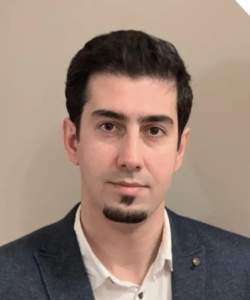 Dr. Hadavand is a senior geostatistician at Resource Modeling Solutions. He specializes in geostatistical reservoir modeling, machine learning, data architecture, multivariate data imputation, quantifying and integration of parameter uncertainty, and integration of 4D seismic data in geostatistical modeling. He holds advanced degrees in geostatistics and mechanical engineering. Prior to joining Resource Modeling Solutions, he was the analytics lead at Silver Creek and Geostatistician at Clayton V. Deutsch Consultants Ltd.
Dr. Hadavand is a senior geostatistician at Resource Modeling Solutions. He specializes in geostatistical reservoir modeling, machine learning, data architecture, multivariate data imputation, quantifying and integration of parameter uncertainty, and integration of 4D seismic data in geostatistical modeling. He holds advanced degrees in geostatistics and mechanical engineering. Prior to joining Resource Modeling Solutions, he was the analytics lead at Silver Creek and Geostatistician at Clayton V. Deutsch Consultants Ltd.
Publications
Peer-reviewed papers
- Hadavand, Mostafa, and Clayton V. Deutsch. “Spatial multivariate data imputation using deep learning and lambda distribution.” Computers & Geosciences 177 (2023): 105376.
- Hadavand, Mostafa, and Clayton V. Deutsch. “Facies proportion uncertainty in presence of a trend.” Journal of Petroleum Science and Engineering 153 (2017): 59-69
- Hadavand, Mostafa, and Clayton V. Deutsch. “A practical methodology for integration of 4D seismic in steam-assisted-gravity-drainage reservoir characterization.” SPE Reservoir Evaluation & Engineering 20.02 (2017): 353-362.
CCG Guidebook
-
Hadavand, M., Dehdari, V. and Deutch, C.V., 2014, A User Guide for SAGD Semi-Analytical Simulator, CCG Guidebook Volume 17, Centre for Computational Geostatistics, University of Alberta, Edmonton, Canada
Contact
Norris Amihere
M.Sc. Graduate (2023)
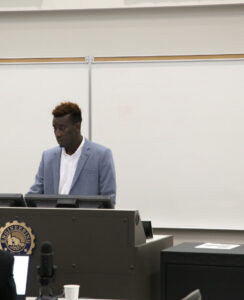 Norris earned his Bachelor of Science in Geological Engineering from Kwame Nkrumah University of Science and Technology in 2019. Before joining the CCG team, he gained valuable experience at Adamus Resource Limited in Ghana, where he worked as both a mine geologist and a geotechnical engineer. As a mine geologist, Norris’s primary responsibilities included grade control modeling and monitoring ore blast movement utilizing Blast Movement Technology. In his role as a geotechnical engineer, he conducted slope stability analyses for pit geometry projections and investigated surface drainage patterns and groundwater regimes, assessing their impact on wall stability over time. Since January 2021, Norris has been a member of the CCG research group and is on track to complete his M.Sc. in Mining Engineering by September 2023, under the guidance of Dr. Clayton V. Deutsch. Within our research group, Norris has directed his research toward grade control and long-term modeling. His extensive research has focused on evaluating and establishing optimal geostatistical techniques and parameter configurations for modeling grade control and exploration data.
Norris earned his Bachelor of Science in Geological Engineering from Kwame Nkrumah University of Science and Technology in 2019. Before joining the CCG team, he gained valuable experience at Adamus Resource Limited in Ghana, where he worked as both a mine geologist and a geotechnical engineer. As a mine geologist, Norris’s primary responsibilities included grade control modeling and monitoring ore blast movement utilizing Blast Movement Technology. In his role as a geotechnical engineer, he conducted slope stability analyses for pit geometry projections and investigated surface drainage patterns and groundwater regimes, assessing their impact on wall stability over time. Since January 2021, Norris has been a member of the CCG research group and is on track to complete his M.Sc. in Mining Engineering by September 2023, under the guidance of Dr. Clayton V. Deutsch. Within our research group, Norris has directed his research toward grade control and long-term modeling. His extensive research has focused on evaluating and establishing optimal geostatistical techniques and parameter configurations for modeling grade control and exploration data.
Publications
Geostatistics lessons:
- Amihere, N., & Deutsch, C.V. (2022). Localization of Probabilistic Resource Models. In J. L. Deutsch (Ed.), Geostatistics Lessons. Retrieved from http://www.geostatisticslessons.com/lessons/localization
Contact
Oy Leuangthong
Ph.D. Graduate (2003)
Thesis:
Olena Babak
Ph.D. Graduate (2008)
Dr. Olena Babak, P.Eng., works as a Sr. Geostatistician / Geomodeler with Cenovus Energy Inc. (Geoscience Center of Excellence), where she carries out and supervises quantitative geological evaluations and geostatistical analysis, as well as conducts research into improvement of methodologies and tools for better modeling of heterogeneity and uncertainty in petroleum reservoirs and mineral deposits. She is a recipient of the 2015 & 2014 Canadian Society for Petroleum Geologists (CSPG) Service Awards and a winner of the 2011 Andrei Borisovich Vistelius Research Award from the International Association for Mathematical Geosciences.
Dr. Babak holds an M.Sc. degree in Statistics from the Ivan Franko National University of Lviv (2004), an M.Sc. in Industrial Engineering from the University of Iceland (2005), and a Ph.D. degree in Geostatistics from the University of Alberta (2008). From Sept. 2008 to Aug. 2013, Olena worked as a Geostatistics Specialist & Geomodeler for Total E&P Canada Ltd. Before joining Total, she was a geostats consultant (March 2007 to Aug. 2008) for the Surmont project that is jointly operated by ConocoPhillips and Total.
Dr. Babak has published 24 journal papers more than 30 conference articles and technical papers/reports. She is a member of the Geomodeling Committee at CSPG. Olena was awarded more than 10 prestigious scholarships and awards, including the Alberta Ingenuity Scholarship, the Andrew Stewart Memorial Graduate Prize (best doctoral research), and the 2010-2013 CSPG Volunteer Awards.
Publications
Refereed Journal Publications:
- Babak, O. and Resnick, J. (2016) A Workflow for Vertical and Horizontal Near-Wellbore Permeability Modeling in the McMurray Formation. Petroleum Geoscience (accepted), doi:10.1144/petgeo2015-063.
- Babak, O., and Resnick, J. (2016) On the Use of Particle Size Distribution Data for Permeability Modeling. SPE Reservoir Evaluation & Engineering, 19(01): 163-180.
- Garner, D., Babak, O. and Deutsch, C.V. (2015) Introduction to the Special Edition from the 2014 Gussow Conference on Advances in Applied Geomodeling. Bulletin of Canadian Petroleum Geology, 63(4): 275-276.
- Babak, O. (2015) A Discussion of the Importance of Particle Size Distribution Data for Characterizing Athabasca Oil Sands. Bulletin of Canadian Petroleum Geology, 63(4): 318-332.
- Lajevardi, S., Babak, O., and Deutsch, C.V. (2015) Estimating Barrier Shale Extent and Optimizing Well Placement in Heavy Oil Reservoirs. Petroleum Geoscience, 21: 332-332.
- Babak, P., Henriquel, P., Insalaco, E., and Babak, O. (2015) Multivariate Data Cleaning and Re-Classification of Particle Size Distribution Data for Joslyn Lease. CIM Journal, 6(2): 75-90.
- Babak, O., Bergey, P., and Deutsch, C.V. (2014) Trend Modeling for Surmont Lease. Journal of Petroleum Science and Engineering, 119: 85-103.
- Babak, O. (2014) Inverse Distance Interpolation for Facies Modeling. Stochastic Environmental Research & Risk Assessment, 28: 1373-1382.
- Manchuk, J.G., Babak, O., and Deutsch, C.V. (2014) Numerical Modeling of Mining Selectivity for Oil Sands. CIM Journal, 5(3): 1-12.
- Manchuk, J.G., Babak, O., and Deutsch, C.V. (2013) Geostatistical Modeling of Particle Size Distributions in the McMurray Formation. CIM Journal, 4(2): 1-16.
- Babak, O., Cuba,, and Leuangthong, O. (2013) On Direct Upscaling of Semivariograms and Cross Semivariograms for Scale Consistent Geomodeling. SME Transactions 334: 544-552.
- Babak, O., Manchuk, J.G., and Deutsch, C.V. (2013) Accounting for Non-Exclusivity in Sequential Indicator Simulation of Categorical Variables. Computers & Geosciences, 51: 118-128.
- Babak, O., Machuca M.D.F., and Deutsch, C.V. (2010) An Approximate Method for Joint Simulation of Multiple Spatial Variables. Stochastic Environmental Research & Risk Assessment, 24: 327-336.
- Babak, O., and Deutsch, C.V. (2009) New Kriging Method for Estimation from Strings of Data in a Finite Domain. SME Transactions, 326: 10-15.
- Babak, O., and Deutsch, C.V. (2009) Improved Spatial Modeling by Merging Multiple Secondary Data for Intrinsic Collocated Cokriging. Journal of Petroleum Science and Engineering, 69: 93-99.
- Babak, O., and Deutsch, C.V. (2009) Collocated Cokriging based on Merged Secondary Attributes. Mathematical Geosciences, 41: 921-926.
- Babak, O., and Deutsch, C.V. (2009) Statistical Approach to Inverse Distance Interpolation. Stochastic Environmental Research & Risk Assessment, 23: 543-553.
- Babak, and Deutsch, C.V. (2009) An Intrinsic Model of Coregionalization that Solves Variance Inflation in Collocated Cokriging. Computers & Geosciences, 35: 603-614.
- Babak, O., and Deutsch, C.V. (2009) Accounting for Parameter Uncertainty in Reservoir Uncertainty Assessment: the Conditional Finite-Domain (CFD) Approach. Natural Resources Research, 18: 7-17.
- Babak, O., and Deutsch, C.V. (2008) Uncertainty as the Overlap of Alternate Conditional Distributions. Computational Geosciences, 12(4): 503-512.
- Babak, O., and Deutsch, C.V. (2008) Reserves Uncertainty Calculation accounting for Parameter Uncertainty. Journal of Canadian Petroleum Technology, August 2008: 41-49.
- Machuca M.D.F., Babak, O., and Deutsch, C.V. (2008) Flexible Change of Support Model Suitable for a Wide Range of Mineralization Styles. Mining Engineering, February 2008: 63-72.
- Babak, O., Hrafnkelsson, B. and Palsson, O.P. (2007) Estimation of Length Distribution of Marine Populations in the Gaussian-Multinomial Model Setting using Method of Moments. Journal of Applied Statistics, 34(8): 985-991.
- Domans’kyy, P.P. and Soroka, I. (2002) Optimization of Form of Highly Supported Pivots in Problems of their Stability in Two Measures. Mat. Metody Fiz.-Mekh. Polya. (Mathematical Methods and Physical-Mechanical Fields), 45(3): 148-154.
Contact
Patrick Donovan
M.Sc. Graduate (2015)
Thesis:
Growing up in St. John’s, Newfoundland I completed my undergraduate degree at Memorial University obtaining BSc. in Earth Sciences. I have a background as a professional geologist in greenfield/brownfield exploration, grade control, and resource estimation. I have experience in several different locations within Canada moving between uranium exploration, nickel-copper production & supervision, and gold production. In 2013 I decided to expand my knowledge base by joining the CCG and beginning my MSc. in Applied Geostatistics. I am an active member of the research group in the latter portion of degree completion.
Research
My research includes directions in the application of unequally sampled data for prediction. Topics consist of:
- Bias and error and removal.
- Effective drill spacing definition and optimization using unequally sampled data.
- Further directions in prediction with multiple data types.
Contact
Paolo Kumara
M.Sc. Graduate (2019)
Paolo Kumara completed his bachelor’s degree in Mine Geology from Bandung Institute of Technology, Bandung, Indonesia in 2013. He has 2 years of experience as a grade control geologist in an open-pit gold mine in North Sulawesi, Indonesia. And has experience as an exploration geologist and geophysicist when he was doing undergraduate study. Joined the group as a Master of Science in mining engineering student at CCG in 2017.
Research
- Geometallurgical modeling
Contact
Paula Larrondo
M.Sc. Graduate (2004)
Thesis:
- Larrondo, P., 2004, Non-Stationary Boundary Modeling in Geostatistics, M.Sc. Thesis, University of Alberta, Edmonton, Canada
Background Before Joining the CGG
- M.Sc., Geology, Universidad de Chile, 2002
- Geologist, Universidad de Chile, 1995
Occupations Since Leaving the CGG
- Director of the Geology School, Universidad Mayor, Chile, 2013 to present
- Independent resource modeling consultant, 2011 to present
- AMEC, Principal Geostatistician, 2010 to 2011
- Golder Associates, Senior Geostatistician, 2005 to 2009
Research
- Undergraduate Education for Geoscience
- Risk Modelling
- Geometallurgy
Contact
Pedro Henrique Alves Campos
Ph.D. Graduate (2023)

Pedro completed his B.Sc. in Mining Engineering from the Federal University of Minas Gerais (Brazil) in 2014. In 2017, completed his master’s in Mining Engineering, focused on mine planning, from Federal University of Ouro Preto (Brazil) with a 2-month visiting period in Delphos Mine Planning Lab (Chile). He is currently pursuing his Ph.D. study in Mining Engineering, focused on geostatistics and geometallurgy, from the Federal University of Rio Grande do Sul (Brazil) and joined the CCG in 2021 as a visiting researcher. Pedro also teaches Geostatistics and Mine Design to undergraduate students at the Federal University of Minas Gerais (Brazil).
Research
- Mine planning considering spatial geometallurgical models
- Geostatistics focused on geometallurgical modelling
Publications
Peer-review Journal
- CAMPOS, P. H. A.; ORTIZ, C. E. A. ; MORALES, N. . Application of optimized models through direct block scheduling in traditional mine planning. Journal of the Southern African Institute of Mining and Metallurgy, v. 118, p. 381-386, 2018.
- CAMPOS, P. H. A.; Cabral, I.E ; ORTIZ, C. E. A. ; MORALES, N. . Comparison between the application of conventional mine planning and direct block scheduling on an open pit mine Project. REM – International Engineering Journal, v. 71, p. 269-274, 2018.
- Pedro Henrique Alves Campos, João Felipe Coimbra Leite Costa, Vanessa Cerqueira Koppe & Marcel Antônio Arcari Bassani (2021) Geometallurgy-oriented mine scheduling considering volume support and non-additivity, Mining Technology, DOI: 10.1080/25726668.2021.1963607
Contact
Ryan Barnett
Ph.D. Graduate (2015)
Ryan Barnett is a Principal Geostatistician with Resource Modeling Solutions. He has also worked as a geostatistical consultant since 2011, completing projects for both mining and petroleum companies. Before joining the University of Alberta, Ryan worked as a geologist within the Athabasca oil sands.
Research
- Multivariate geostatistical modeling
- Multivariate decorrelation and Gaussian transformations
- Multivariate data imputation
- Multivariate data analysis
- Data Spacing and Uncertainty
Publications
Peer-review Journal
- Barnett, R. M., Pinto, F., Lyster, S., MacCormack, K. (2017) Principles of Data Spacing and Uncertainty in Geomodeling, Bulletin of Canadian Petroleum Geology [In Press].
- Manchuk, J.G., Barnett, R.M., Deutsch, C.V. (2016) Reproduction of secondary data in projection pursuit transformation. Submitted to Stochastic Environmental Research and Risk Assessment
- Barnett, R.M., Manchuk, J.G., Deutsch, C.V. (2016) The projection pursuit multivariate transform for improved continuous variable modeling. SPE Journal, 21 (6), 2010 – 2026
- Barnett, R. M., Manchuk, J.G. and Deutsch, C. V., (2015) Projection Pursuit Multivariate Transformation. Mathematical Geosciences, 46, 337-359.
- Barnett, R. M. and Deutsch, C. V., (2014) Multivariate imputation of unequally sampled geological variables. Mathematical Geosciences, 47, 791-817.
Peer-review Conference
- Barnett, R. M. and Deutsch, C. V., 2012. Practical implementation of non-linear transforms for modeling geometallurgical variables. In Abrahamsen, P., Hauge, R., and Kolbjornsen, O., editors, Geostatistics Oslo 2012, pages 409{422. Springer, Netherlands.
CCG Guidebook Series
- Barnett, R.M., 2011. Tools for Multivariate Geostatistical Modeling, CCG Guidebook Series, Vol.14, University of Alberta, 107p.
- Barnett, R.M. and Neufeld, C.T., 2012. Basic Scripting Methods, CCG Guidebook Series, Vol.16, University of Alberta, 49p.
- Barnett, R.M. and Deutsch, C.V., 2015. Guide to Multivariate Modeling with the PPMT, CCG Guidebook Series, Vol.20, University of Alberta, 107p.
CCG Report
- Barnett, R.M., 2011. Conditional standardization: a multivariate transformation for the removal of non-linear and heteroscedastic features, CCG Annual Report 13, paper 310.
- Barnett, R.M. and Deutsch, C.V., 2012. Multivariate Standard Normal Transform: Advances and Case Studies, CCG Annual Report 14, paper 102.
- Barnett, R.M. and Deutsch, C.V., 2012. Non-parametric Gibbs Sampler with kernel-based conditional distributions, CCG Annual Report 14, paper 102.
- Barnett, R.M., Manchuk, J.G., and Deutsch, C.V., 2012. Projection Pursuit Multivariate Transform, CCG Annual Report 14, paper 103.
- Barnett, R.M. and Deutsch, C.V., 2012. Missing data replacement in a multiGaussian context, CCG Annual Report 14, paper 112.
- Barnett, R.M. and Deutsch, C.V., 2012. Missing data replacement in a complex multivariate context, CCG Annual Report 14, paper 113.
- Barnett, R.M. and Deutsch, C.V., 2013. Imputation of geologic data, CCG Annual Report 15, paper 102.
- Barnett, R.M., Manchuk, J.G, and Deutsch, C.V., 2013. Advances in the Projection Pursuit Multivariate Transform, CCG Annual Report 15, paper 106.
- Barnett, R.M. and Deutsch, C.V., 2013. Why the log in log-ratios? CCG Annual Report 15, paper 108.
- Barnett, R.M. and Deutsch, C.V., 2013. Checking the multivariate reproduction of geostatistical models, CCG Annual Report 15, paper 125.
- Barnett, R.M. and Deutsch, C.V., 2013. Alternative to Bayesian Updating/P-field Mapping, CCG Annual Report 15, paper 203.
- Barnett, R.M. and Deutsch, C.V., 2013. Optimized long-term well planning, CCG Annual Report 15, paper 303.
- Barnett, R.M. and Deutsch, C.V., 2013. Tutorial and tools for ACE regression and transformation, CCG Annual Report 15, paper 401.
- Barnett, R.M. and Deutsch, C.V., 2013. Assessing the uncertainty and value of ACE transformations, CCG Annual Report 15, paper 402.
- Barnett, R.M. and Deutsch, C.V., 2014. Multivariate Transformations with Exhaustive Secondary, CCG Annual Report 16, paper 103.
- Barnett, R.M. and Deutsch, C.V., 2014. PPMT Back-transformations, CCG Annual Report 16, paper 104.
- Barnett, R.M., Deutsch, J.L. and Deutsch, C.V., 2014. Practical Workflows for Geostatistical Modeling with Mean Uncertainty, CCG Annual Report 16, paper 113.
- Barnett, R.M. and Deutsch, C.V., 2014. A Compressed Binary Format for Large Geostatistical Models, CCG Annual Report 16, paper 413.
- Barnett, R.M. and Deutsch, C.V., 2015. Linear Rotations: Options for Decorrelation and Analysis, CCG Annual Report 17, paper 107.
- Deutsch, J.L., Barnett, R.M. and Deutsch, C.V. 2015, Latest Kriging Program, CCG Annual Report 17, paper 402.
- Barnett, R.M., Deutsch, J.L., and Deutsch, C.V., 2015. Summary of Some Useful Software and Tools, CCG Annual Report 17, paper 403.
- Barnett, R.M., Deutsch, J.L., and Deutsch, C.V., 2015. Conventional Clustering Algorithms and a Program for their Application, CCG Annual Report 17, paper 404.
Contact
Ryan Martin
Ph.D. Graduate (2019)
I received my MSc studying the geochemistry and petrogenesis of a syenite-hosted gold deposit in northern Ontario. During the following year, I completed several deterministic geological modeling projects which set my sights firmly on learning more about computational geosciences. I joined the CCG in 2014, and have worked on various topics, all relating to modeling complex geometries that are present in ore deposits. I am currently interested in spatial classification techniques that can be used to group similar data based on location and multivariate properties.
Research
My current research interests include:
- Modeling the components of an LVA field
- LVA in implicit geological modeling
- Spatial clustering
- Pygeostat and mixed Python and Fortran programming
Publications
CCG report:
- Ryan Martin, David Machuca, Oy Leuangthong and Jeff Boisvert, 2015, Evaluating LVA methods with locally varying magnitudes, CCG Paper 2015-114, Centre for Computational Geostatistics, University of Alberta, Edmonton, Canada
- Ryan Martin, John Manchuk, and Jeff Boisvert, 2015, Automatic LVA field generation in 3D, CCG Paper 2015-111, Centre for Computational Geostatistics, University of Alberta, Edmonton, Canada
- Ryan Martin and Jeff Boisvert, 2015, New Method to Estimate the Locally Varying Magnitudes in an LVA Field, CCG Paper 2015-113, Centre for Computational Geostatistics, University of Alberta, Edmonton, Canada
- Ryan Martin and Jeff Boisvert, 2015, Review of Radial Basis Functions and Domain Decomposition for Implicit Geological Modelling, CCG Paper 2015-118, Centre for Computational Geostatistics, University of Alberta, Edmonton, Canada
Peer-Reviewed:
- Structural setting of the Young-Davidson syenite-hosted gold deposit in the western Cadillac-Larder Lake deformation zone, Abitibi Greenstone Belt, Superior Province, Ontario. 2014. Lin, S., Zhang, J., Linnen, R.L., and Martin, R. Precambrian Research, v. 248, 39-59.
- Paleoproterozoic hydrothermal reactivation in a neoarchean orogenic lode-gold deposit of the southern Abitibi subprovince: U-Pb monazite geochronological evidence from the Young-Davidson mine, Ontario. 2014. Zhang, J., Linnen, R., Lin, S., Davis, D., and Martin, R. Precambrian Research, v. 249, 263-272.
Thesis:
Syenite-hosted gold mineralization and hydrothermal alteration at the Young-Davidson deposit, Matachewan, Ontario. 2012. Martin, R. Master Thesis of the University of Waterloo, pp. 172.
Misc Reports:
Synthesis of the Structure, Petrology, Geochronology and Geochemistry of the Young–Davidson Gold Deposit and Surrounding Area, by R.L. Linnen, S. Lin, J. Zhang, R.D. Martin, N. Naderi, D.W. Davis, M.A. Hamilton, R.A. Creaser, B.R. Berger, N.R. Banerjee, B.A. Wing and C. Wu. 2013. Ontario Geological Survey, Miscellaneous Release-Data 294.
Contact
Samer Hmoud
M.Sc. Graduate (2018)
Samer Hmoud is an Exploration Geologist with more than four years of experience in the field of mining and Oil/Gas industries. He received both his Bachelor’s and Master’s Degrees with distinction in Geology from the Hashemite University in Jordan (Ranked first among his colleagues). His Master’s thesis research aimed to model Surficial Uranium Deposits in Central Jordan. In September 2015, Samer joined the Centre for Computational Geostatistics (CCG) at the University of Alberta as an MSc student of Mining Engineering and his main research focus is Petroleum Geostatistics.
Research
- Applying new Multivariate Geostatistical Modeling techniques to Unconventional Hydrocarbon Reservoirs
Contact
Sahyun Hong
Ph.D. Graduate (2010)
Thesis:
Dr. Hong is a geologist and geomodeler, working for ConocoPhillips in Houston TX.
Contact
Saina Lajevardi
Ph.D. Graduate (2015)
Thesis:
Saina Lajevardi completed her Ph.D. under the supervision of Clayton V. Deutsch, in September 2015. She is currently involved with research studies at the CCG. She holds an M.Sc. degree in Electrical and Computer Engineering (Communications) from the University of Alberta (2011) and a B.Sc. in Electrical Engineering from the Eastern Mediterranean University (2008).
Research
- Model post-processing
- Ranking (multi-scale ranking)
- Model Re-gridding/Downscaling
Publications
Peer-reviewed papers:
- Lajevardi, S., Babak, O., and Deutsch, C. V. (2015). Estimating barrier shale extent and optimizing well placement in heavy oil reservoirs. Petroleum Geoscience: 22(4):322-332.
- Lajevardi, S., and Deutsch, C. V. (2015). Stochastic Regridding of Geological Models for Flow Simulation. Bulletin of Canadian Petroleum Geology: 63(4):225–243.
- Lajevardi, S. and Deutsch, C. V. (2016). A Measure of Facies Mixing in Data Upscaling to Account for Information Loss in Estimation of Petrophysical Properties. Petroleum Geoscience: 22(3):190-201.
Conferences:
- Lajevardi, S., and Deutsch, C. V. (Sep, 2015). Lateral Continuity of Stochastic Shales. EAGE event: Petroleum Geostatistics 2015, Biarritz, France (oral presentation)
Contact
Samaneh Sadeghi
Ph.D. Graduate (2017)
Samaneh was a Ph.D. student in the Centre for Computational Geostatistics (CCG) at the University of Alberta from 2012 to 2017. She also holds an MSc. and B.Sc. in Statistics.
Research
- Categorical variable modeling
- Applications of Truncated Pluri-Gaussian approach to model complex geological settings
Publications
Peer-review Journal
- Sadeghi, S., and Boisvert, J. B., 2014. Optimization of variograms used for truncated pluri Gaussian simulation. Journal of Bulletin of Canadian Petroleum Geology.
Conference
- Sadeghi, S., and Boisvert, J. B., 2015. Local Truncated Pluri-Gaussian Mask Optimization for Categorical Variable Modelling with Locally Varying Proportions. In 37th International Symposium on the Application of Computers and Operations Research in the Mineral Industry (APCOM 2015).
CCG Report
- Sadeghi, S., and Boisvert, J. B., 2012, Optimizing Thresholds in Truncated Pluri-Gaussian Simulation, CCG Paper 2012-100, Centre for Computational Geostatistics, University of Alberta, Edmonton, Canada.
- Sadeghi, S., and Boisvert, J. B., 2013, Optimizing a Discretized Truncated Pluri-Gaussian Simulation Mask with Simulated Annealing, CCG Paper 2013-121, Centre for Computational Geostatistics, University of Alberta, Edmonton, Canada.
- Sadeghi, S., and Jeff B. Boisvert, 2013, Facies modeling Optimization with Truncated Pluri-Gaussian, CCG Paper 2013-122, Centre for Computational Geostatistics, University of Alberta, Edmonton, Canada.
- Sadeghi, S., and Jeff B. Boisvert, 2013, Optimizing Object Based Mask in Truncated Pluri-Gaussian Simulation and Sensitivity Analysis, CCG Paper 2013-123, Centre for Computational Geostatistics, University of Alberta, Edmonton, Canada.
- Sadeghi, S., and Jeff B. Boisvert, 2014, Truncated Pluri-Gaussian Simulation in Presence of Locally Variation Proportions, CCG Paper 2014-109, Centre for Computational Geostatistics, University of Alberta, Edmonton, Canada.
- Sadeghi, S., and Jeff B. Boisvert, 2014, Variogram Optimization in Truncated Pluri-Gaussian Simulation, CCG Paper 2014-114, Centre for Computational Geostatistics, University of Alberta, Edmonton, Canada.
- Sadeghi, S., and Jeff B. Boisvert, 2014, Modeling of the Red Dog Deposit using Truncated Pluri-Gaussian Simulation, CCG Paper 2014-311, Centre for Computational Geostatistics, University of Alberta, Edmonton, Canada.
Contact
Sebastian Sanchez
M.Sc. Graduate (2023)
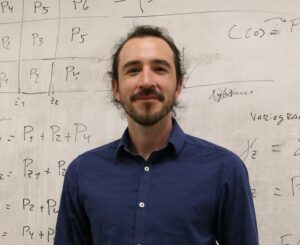 Sebastian completed his B.Sc. degree in Geology at the University of Chile. His undergraduate thesis was about analyzing the infrared spectrum of core samples. He has 3+ years of experience in geological modeling, classification, and resource estimation of porphyry copper deposits. He joined the CCG and started his M.Sc. degree in 2021 under the supervision of Dr. Clayton Deutsch and Jeff Boisvert.
Sebastian completed his B.Sc. degree in Geology at the University of Chile. His undergraduate thesis was about analyzing the infrared spectrum of core samples. He has 3+ years of experience in geological modeling, classification, and resource estimation of porphyry copper deposits. He joined the CCG and started his M.Sc. degree in 2021 under the supervision of Dr. Clayton Deutsch and Jeff Boisvert.
Research
- Radial Basis Functions interpolation applied to Multiple Indicator Kriging
- Indicator variograms consistency
Publications
CCG reports:
- Sebastian Sanchez, Clayton Deutsch and Jeffery Boisvert, 2022, Constrained RBF for Multiple Indicator Kriging, CCG Paper 2022-101, Centre for Computational Geostatistics, University of Alberta, Edmonton, Canada
- Sebastian Sanchez, Clayton Deutsch and Jeffery Boisvert, 2022, A comparison between Multiple Indicator Kriging methodologies: Constrained RBF, Compositional Data and Simplicial Kriging, CCG Paper 2022-102, Centre for Computational Geostatistics, University of Alberta, Edmonton, Canada
- Sebastian Sanchez, Clayton Deutsch and Jeffery Boisvert, 2022, Derivation of probability constraints for Multiple Indicator Kriging, CCG Paper 2022-103, Centre for Computational Geostatistics, University of Alberta, Edmonton, Canada
Geostatistics lesson
- Sanchez, S., & Deutsch, C.V. (2022). Domain Delimitation with Radial Basis Functions. In J. L. Deutsch (Ed.), Geostatistics Lessons. Retrieved from http://www.geostatisticslessons.com/lessons/implicitrbf
Contact
Steven Lyster
Ph.D. Graduate (2009)
Thesis:
Contact
Steve Mancell
M.Sc. Graduate (2020)
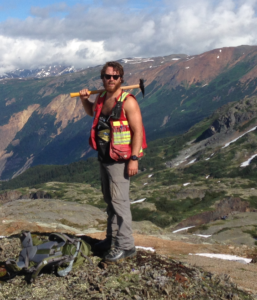
Steve Mancell completed his B.Sc. in Geology from the University of Victoria, Canada in 2011. Steve has 10 years of work experience in both hard and soft rock mining in various roles including underground miner, exploration geologist, production geologist, and resource geologist. Most recently his employment was in the precious metals industry where he was part of a team that discovered, delineated, permitted, and brought into production, a high-grade underground gold asset in British Columbia.
Thesis
Research
- Boundary Modeling
- Probability-Threshold Functions for Extracting Boundary Uncertainty
Publications
CCG Report
- Mancell, S.A. & Deutsch, C.V. (2019). The Problem with Signed Distance Functions (CCG Annual Report 21). Edmonton, AB: University of Alberta.
- Mancell, S.A. & Deutsch, C.V. (2019). Nearest Neighbour Calibration for Implicit Boundary Modeling (CCG Annual Report 21). Edmonton, AB: University of Alberta.
- Mancell, S.A. & Deutsch, C.V. (2019). Boundary Modeling and Probabilty-Threshold Functions (CCG Annual Report 21). Edmonton, AB: University of Alberta.
Contact
Tolonbek Borisovich Karpekov
M.Sc. Graduate (2016)
Tolonbek graduated with a BSc in Mining Engineering from the Moscow State Mining University, Moscow, Russia. He also studied Natural Resources Management at the North Dakota State University, Fargo, USA. Before joining the CCG, Tolonbek worked in different positions, primarily in health & safety and environmental protection divisions in mining companies, as well as for the Government of the Kyrgyz Republic. Tolonbek is currently pursuing his MSc in Geostatistics at the University of Alberta.
Research
- Mining mineral resources uncertainty estimation
Contact
Tye Faechner
Ph.D. Graduate (2003)
Thesis:
Tyler Acorn
M.Sc. Graduate (2017)
Tyler Acorn joined the CCG in September 2014 and is pursuing his M.Sc. in Geostatistics. Before joining the CCG, Tyler graduated with a B.Sc. in Mining Engineering from the Missouri University of Science and Technology and then spent the next 6 years as a mining Engineer in the Carlin Trend-type gold deposits of Northeast Nevada. During his role as a Mining Engineer, he rotated through multiple positions primarily in short-range planning, drill, and blast, and lastly as a Senior Engineer working on the site reconciliation reports.
Research
- Tyler will continue to focus primarily on the mining industry in his research in geostatistics. His current interest is in practical uses of simulation in a mining context that not only provide correct estimations but also delve into accessing and using further information such as uncertainty or understanding a learning model for specific sites.
Publications
- Geotechnical Slope Remediation Via Controlled Slope Failure Blasting, T. Acorn, 2011 International Society of Explosive Engineers Conference held in San Diego, California, February 2011.
- Hole Diameter: Does it Affect Vibration Attenuation, N. Rouse, T. Acorn, and P. Worsey, 2013 International Society of Explosive Engineers Conference held in Fort Worth, Texas, February 2013.
Contact
Vahid Dehdari
Ph.D. Graduate (2014)
Work Experience:
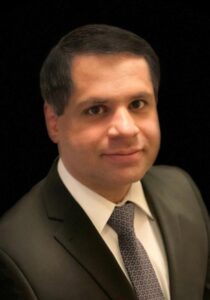
Working at ConocoPhillips during the last 10 years initially as Reservoir engineer and now as a senior data scientist.
Education:
- M.Sc. Business Data Analytics, Georgia Tech. University, USA
- Ph.D. Mining Engineering, University of Alberta, Canada
- M.Sc. Petroleum Engineering, University of Oklahoma, USA
- M.Sc. Chemical Engineering, Sahand University of Technology (Iran)
- B.Sc. Petroleum Engineering, Petroleum University of Technology (Iran)
Awards:
- 2013 JCPT outstanding technical editor, awarded by Society of petroleum engineers (SPE).
Thesis
Publications
- V. Dehdari, C. V. Deutsch, “Theory and Implementation of an Approximate Physics Simulator for Heavy Oil Production Forecasting”, SPE-199943-MS, SPE Canada Heavy Oil Technical Conference, 2020.
- R. Aboorvanathan, A. Hossini, C. Dong, V. Dehdari, J. Feeney, SAGD Production Optimization Through Preferential Steam Allocation, SPE-195984-MS, SPE Annual Technical Conference and Exhibition, 30 September – 2 October, Calgary, Alberta, Canada
- V. Dehdari, C. Dong, E. Marron, “Calibrating a Semi-Analytic SAGD Forecasting Model to 3D Heterogeneous Reservoir Simulations”, SPE-184980-MS, SPE Canada Heavy Oil Technical Conference, 2017.
- V. Dehdari, C. V. Deutsch, “Optimizing Well Trajectories in Steam-Assisted-Gravity-Drainage Reservoir Development”, SPE-174078-PA, SPE Reservoir Evaluation & Engineering Journal, Volume 8, Issue 01, Pages 53-68
- V. Dehdari, C. V. Deutsch, D. Oliver, “Comparison of optimization algorithms for reservoir management with constraints-a case study” Journal of Petroleum Science and Engineering, Volume 100, December 2012, Pages 41–49.
- V. Dehdari, D. Oliver, “Sequential Quadratic Programming (SQP) for solving constrained production optimization-case study from Brugge field (SPE 141589-PA), SPE Journal, 17(3), 874-884.
- V. Dehdari, C.V. Deutsch, “Applications of randomized methods for decomposing and simulating from large covariance matrices”, Geostatistics Oslo 2012, Pages 15-26, Springer, Dordrecht.
- V. Dehdari, D. Oliver, “Sequential Quadratic Programming (SQP) for solving constrained production optimization-case study from Brugge field”, SPE Reservoir Simulation Symposium, 21-23 February 2011, The Woodlands, Texas, USA, SPE 141589.
- A. Qazvini, B. Yadali, F. Torabi, V. Dehdari “The relationship between the productivity index and the diffusivity coefficient and its application in reservoir characterization”, Volume 30, Issue 17, 2012, pages 1789-1801.
- V. Dehdari, B. Aminshahidi, A. Tabatabaei, “Well spacing and recovery optimization of one of Iranian oil fields by using streamline and reservoir simulation”, 2008 SPE Western Regional Meeting, Bakersfield, CA, 31-MAR-08 to 02-APR-08, SPE 112985.
Contact
Warren Black
M.Sc. Graduate (2016)
Thesis:
Background Before Joining the CCG
Warren Black completed his B.Sc. with a specialization in Geology from the University of Alberta in 2011. Before beginning his M.Sc. studies, Warren worked primarily for a consultant mineral exploration company gaining experience in a variety of geological settings and commodities. This includes gold, iron, copper, titanium, vanadium, and silver deposits within Nunavut, Alberta, British Columbia, Manitoba, and Greenland.
Occupations Since Leaving the CCG
Geologist – APEX Geoscience Ltd.
http://www.apexgeoscience.com/
Current Research Interests
Utilization of project scale geochemistry and geophysical data for exploration targeting.
Publications
- Black, W.E. & Deutsch, C. V, 2015. A Review of Multivariate Adaptive Regression Splines (MARS) for Multivariate Data Analysis (CCG Annual Report 17). Edmonton AB: University of Alberta. Available at: https://www.ccgalberta.com.
- Black, W.E. & Deutsch, C. V, 2015. Correlation Reproduction of PCA and Sphere-R Transformed Multivariate Data in the Presence of Secondary Data (CCG Annual Report 17). Edmonton AB: University of Alberta. Available at: https://www.ccgalberta.com.
- Black, W.E. & Deutsch, C. V, 2015. Introduction to Mineral Prospectivity Modeling and the Development of a Probabilistic Modeling Framework (CCG Annual Report 17). Edmonton AB: University of Alberta. Available at: https://www.ccgalberta.com.
- Black, W.E. & Deutsch, C. V, 2016. A Short Note on Cholesky Collocated Cokriging (CCG Annual Report 18). Edmonton AB: University of Alberta. Available at: https://www.ccgalberta.com.
- Black, W.E. & Deutsch, C. V, 2016. Multivariate Simulation with Many Secondary Variables (CCG Annual Report 18). Edmonton AB: University of Alberta. Available at: https://www.ccgalberta.com.
- Black, W.E. & Deutsch, C. V, 2016. Transfer of Geological Uncertainty to Probabilistic Mineral Prospectivity Modeling (CCG Annual Report 18). Edmonton AB: University of Alberta. Available at: https://www.ccgalberta.com.
- Martin, R., Black, W.E. & Acorn, T.D., 2016. A Short Note on the HDF5 Binary Library for CCG Researchers and Superusers (CCG Annual Report 18). Edmonton AB: University of Alberta. Available at: https://www.ccgalberta.com.
Contact
Weishan Ren
Ph.D. Graduate (2007)
Thesis:
Contact
Xingquan “Kevin” Zhang
M.Sc. Graduate (2007)
Thesis:
Contact
Yaroslav Vasylchuk
Ph.D. Graduate (2019)
Completed Master’s degree in mining with distinction at Kryvyi Rih Technical University, Ukraine in 2010. From 2010 to 2013, worked for a Ukrainian blasting company as a surveyor and blasting engineer. In 2016, graduated from the Master of Science program at the University of Alberta being a member of the CCG. Later in 2016, decided to start a PhD program and am currently working on my doctoral research.
Research
- Improving grade control in open pit mines using simulation and estimation methods
- Modeling blast movement of grades
- Truck-based selection of mined material
Publications
Scientific publication in international mining journals (2016/2017 years):
- Vasylchuk Y. V. & Deutsch C. V. (2016). Improved Grade Control in Open Pit Mines, Mining Engineering (preprint), Englewood, CO.
CCG conference papers (2016/2017 study year):
- Vasylchuk Y. V. & Deutsch C. V. (2016). Kriging with different search plans. CCG Paper 2016-307, Centre for Computational Geostatistics, University of Alberta, Edmonton, Canada
- Vasylchuk Y. V. & Deutsch C. V. (2016). A short note on combined ordinary and simple kriging for improved estimation of mineral resources. CCG Paper 2016-306, Centre for Computational Geostatistics, University of Alberta, Edmonton, Canada
- Vasylchuk Y. V. & Deutsch C. V. (2016). Optimal Linear Estimation under Different Circumstances, CCG Paper 2016-131, Centre for Computational Geostatistics, University of Alberta, Edmonton, Canada
- Vasylchuk Y. V. & Deutsch C. V. (2016). Nonlinear estimation in mining, CCG Paper 2016-132, Centre for Computational Geostatistics, University of Alberta, Edmonton, Canada
CCG Conference papers (2014/2015 study year
- Vasylchuk Y. V. & Deutsch C. V. (2015). A Short Note on Optimal Kriging Grid Size Relative to Data Spacing, CCG Paper 2015-308, Centre for Computational Geostatistics, University of Alberta, Edmonton, Canada
- Vasylchuk Y. V. & Deutsch C. V. (2015). Assessing the Effectiveness of Using Estimation Methods versus Simulation in Ore/Waste Selection, CCG Paper 2015-310, Centre for Computational Geostatistics, University of Alberta, Edmonton, Canada
- Vasylchuk Y. V. & Deutsch C. V. (2015). A Program for Calculating an Approximate Blast Movement for Improved Grade Control, CCG Paper 2015-311, Centre for Computational Geostatistics, University of Alberta, Edmonton, Canada
- Vasylchuk Y. V. & Deutsch C. V. (2015). A Short Note on Truck-by-Truck Selection versus Polygon Grade Control, CCG Paper 2015-312, Centre for Computational Geostatistics, University of Alberta, Edmonton, Canada
Scientific publication in international mining journals (2011-2014 years):
- Shapurin, O. V., & Vasylchuk, Y. V. (2014). Comprehensive algorithm of the optimization of drilling and blasting parameters. Mining Journal, Yekaterinburg, №3, 55-62.
- Shapurin, O. V., & Vasylchuk, Y. V. (2013). Prediction of the granulometric composition of blasted rocks. Vzryvnoe delo. Moscow, 109/66.
- Vasylchuk Y. V. (2013). The method of blasting with inclined boreholes and its practical implementation. Visnyk KNU. Kryvyi Rih, 35.
- Shapurin O. V., Vasylchuk, Y. V., & Nosov, V. N. (2012). A mathematical model for predicting the granulometric composition of blasted rocks, Visnyk KDU. Kremenchuk, №4, 94-100.
- Vasylchuk Y. V. (2012) Mathematical modeling of blasts in rocks. Visnyk KNU, Kryvyi Rih, 32, 18 -20.
- Nosov, V. N. Vasylchuk, Y. V. $ Murshits, D. A. (2012). The influence of borehole diameter on the technical and economic indicators of blast. The newsletter of UUEE, 2, 9-12.
- Shapurin, O.V. & Vasylchuk, Y. V. (2011). The quality of blasting is considered a result of the combined effect of various factors. Visnyk KNU. Kryvyi Rih, 29, 13 – 17.
Contact
Yimin (Connor) Wang
M.Sc. Graduate (2016)
Connor Wang started his M.Sc. degree in 2014, before which he spent one year in Mine Planning and Simulation Optimization at the University of Alberta. Connor obtained a B.Sc. in Mineral Resource Engineering in 2013 from the University of Science and Technology Beijing in China.
During his B.Sc. Degree, Connor did internships with mining-related international companies such as Jilin Banmiaozi Gold Company Limited (Eldoradogold Corp), Beijing General Research Institute of Mining &Metallurgy, and Shanghai Meishan Mining Limited (Baosteel Corp).
Research
- Modifying the SNESIM program such that rotating the training image slightly creates more samples as input and makes simulations more stable
- Optimization for conditioning object-based models
Contact
Yi Shang
M.Sc. Graduate (2018)
Yi Shang joined the CCG in September 2015 and is currently pursuing his M.Sc. in Geostatistics. He completed his B.Sc. in Petroleum Engineering in 2009 at the China University of Petroleum, Beijing, and then graduated with an MEng in Petroleum Engineering from the University of Alberta in 2011. He spent the next 4 years as a safety engineer at the China Petrochemical Corporation.
Research
- Geostatistical reservoir modeling for SAGD
Contact
Yevgeniy Zagayevskiy
Ph.D. Graduate (2015)

Yevgeniy Zagayevskiy is a product manager at Halliburton, Landmark, responsible for the development of the Full-Scale Asset Simulation (FSAS) SaaS product for petroleum reservoir engineers and geomodelers. He has been employed by Halliburton for 8 years, holding multiple positions ranging from a geomodeling researcher to a product manager in the R&D department. Yevgeniy has had the opportunity to work on various products such as Scalable Earth Modeling (SEM), Integrated Reservoir Management Solutions (IRMS), and FSAS. Throughout his career, Yevgeniy has received 5 patent awards, submitted 5 additional patent applications, and authored close to 2 dozen peer-reviewed papers and technical conference publications in the areas of petroleum reservoir characterization, field development optimization, probabilistic production forecasting, uncertainty quantification, and machine learning-based proxy flow modeling. He holds a PhD and MSc in mining engineering with a focus on geostatistics from the University of Alberta, Canada, and a BSc in petroleum engineering from Kazakh-British Technical University, Kazakhstan. Yevgeniy is also a member of the Society of Petroleum Engineers (SPE) and the International Association for Mathematical Geosciences (IAMG).
Thesis
- Zagayevskiy, Y., 2015, Multivariate Geostatistical Grid-Free Simulation of Natural Phenomena, Ph.D. Thesis, University of Alberta, Edmonton, Canada
- Zagayevskiy, Y., 2012, Constraining 3D Petroleum Reservoir Models to Petrophysical Data, Local Temperature Observations, and Gridded Seismic Attributes with the Ensemble Kalman Filter (EnKF), M.Sc. Thesis, University of Alberta, Edmonton, Canada
Research
- Geostatistics
- Geomodeling
- Petroleum reservoir characterization
Background Before Joining the CCG
- BSc in Petroleum Engineering with honors (2005-2009), Kazakh-British Technical University, Almaty, Kazakhstan
- 2012 summer intern as a geomodeler at Statoil, Calgary, Canada
- 2011-2012 part-time geomodeling consultant at Clayton Deutsch Consultants Ltd, Edmonton, Canada
- 2011 summer intern as a geomodeler at Husky Energy, Calgary, Canada
- 2009 summer intern as a petroleum reservoir engineer at Buzachi Operating Ltd, Aktau, Kazakhstan
- 2008 summer intern as a field operator at China National Logging Corporation, Kumkol oil field, Kazakhstan
- 2007 summer intern as a petroleum engineer at Transneft, Omsk, Russia
Occupations Since Leaving the CCG
Geomodeler at a research and development group of Landmark (Halliburton), Abingdon, England, UK.
Publications
Peer-reviewed papers
- Chai, Z, Nwachukwu, A, Zagayevskiy, Y, Amini, S and Madasu, S (2021) An Integrated Closed-Loop Solution to Assisted History Matching and Field Optimization with Machine Learning Techniques. Journal of Petroleum Science & Engineering (JPSE), 198
(https://www.sciencedirect.com/science/article/abs/pii/S0920410520312584)
- Cho, Y, Cao, Y, Zagayevskiy, Y, Wong, T and Munoz, Y (2020) Kriging-Based Monitoring of Reservoir Gas Saturation Distribution Using Time-Lapse Multicomponent Borehole Gravity Measurements: Case Study, Hastings Field. Journal of Petroleum Science and Engineering (JPSE), 190
(https://www.sciencedirect.com/science/article/abs/pii/S0920410520301480)
- Zagayevskiy, Y and Deutsch, CV. (2016) Multivariate Geostatistical Grid-Free Simulation of natural Phenomena. Mathematical Geosciences, 48(8), 891 – 920
(http://rd.springer.com/article/10.1007/s11004-016-9656-8?view=classic)
- Zagayevskiy, Y and Deutsch, CV. (2016) Application of Grid-Free Geostatistical Simulation to a Large Oil Sands Reservoir. SPE Reservoir Evaluation & Engineering-Formation Evaluation, 19(3), 367 – 381
(https://www.onepetro.org/journal-paper/SPE-180917-PA)
- Zagayevskiy, Y and Deutsch, CV. (2016) Petroleum Reservoir Characterization with Grid-Free Simulation: Hekla Case Study. Petroleum Geoscience, 22(3), 241 – 256
(http://pg.lyellcollection.org/content/22/3/241.abstract)
- Zagayevskiy, Y and Deutsch, CV. (2016) Multivariate Grid-Free Geostatistical Simulation with point or Block Scale Secondary Data. Stochastic Environmental Research and Risk Assessment, 30(6), 1613 – 1633
(http://rd.springer.com/article/10.1007/s00477-015-1154-x)
- Zagayevskiy, Y and Deutsch, CV. (2015) Assimilation of Time-Lapse Temperature Observations and 4D-Seismic Data with the EnKF in SAGD Petroleum Reservoirs. Journal of Canadian Petroleum Technology, 54(3), 164 – 182
(https://www.onepetro.org/journal-paper/SPE-174547-PA)
- Zagayevskiy, Y and Deutsch, CV. (2015) A Methodology for Sensitivity Analysis Based on Regression: Applications to Handle Uncertainty in Natural Resources Characterization. Natural Resources Research, 24(3), 239 – 274
(http://link.springer.com/article/10.1007/s11053-014-9241-0?sa_campaign=email/event/articleAuthor/onlineFirst)
- Zagayevskiy, Y and Deutsch, CV. (2013) Impact Map for Assessment of New Delineation Well Locations. Journal of Canadian Petroleum Technology, 52(6), 441 – 462
(https://www.onepetro.org/journal-paper/SPE-168222-PA)
Contact
Yupeng Li
Ph.D. Graduate (2011)
After CCG
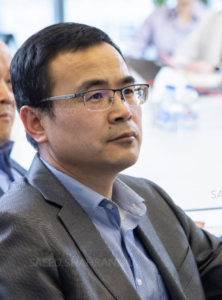
- Assistant Professor at China University of Petroleum (2011-2014)
- Research Geologist at Aramco Beijing Research Center (2014-2018)
- Senior Research Geologist at Aramco Beijing Research Center (2018-2020)
- Geological Specialist at Aramco Beijing Research Center (2020 – )
Education
PhD. Mining Engineering 2007- 2011
University of Alberta, Canada
MSc. Geological Engineering 2004- 2007
China University of Petroleum (Beijing), China
BSc. Petroleum Engineering 1996- 2000
Daqing Petroleum Institute, China
Thesis
Publications
Peer-reviewed papers
- Yupeng Li, Rashid S. Mohammad, Integrate inter–well connectivity data with static reservoir models based on Bayesian formalism, Petroleum Research, 2023, https:10.1016/j.ptlrs.2023.01.003.
- Yupeng Li, Maolin Luo, Shouxiang Ma, and Peng Lu. Massive Spatial Well Clustering Based on Conventional Well Log Feature Extraction for Fast Formation Heterogeneity Characterization. Lithosphere 2022;(12): 7260254. doi: https://doi.org/10.2113/2022/7260254
- Yang, D., Li, Y. & Deutsch, C.V. Covariogram ranges for approximate global sensitivity analysis. Computational Geosciences. 26, 1397–1407 (2022). https://doi.org/10.1007/s10596-022-10167-1
- Yupeng Li, Solomon Asante-Okyere. Reconstruction of Quantitative Lithofacies Palaeogeography Based on Latent Class Analysis, Modeling Earth Systems and Environment, 2021
- Yupeng Li, Peng Lu, Guoyin Zhang. An Artificial-Neural-Network-Based Surrogate Modeling Workflow for Reactive Transport Modeling, Petroleum Research,2021.
- Yupeng Li and Clayton V. Deutsch. Implementation of the iterative proportion-fitting algorithm for geostatistical facies modeling. Natural Resources Research. 2012, 21(2): 221-231.
Contact
 I received my B.Sc. in Mining Engineering from the University of Tehran, Iran, in 2020. My undergraduate research was focused on the modeling of machinery fleets under uncertainty using robust optimization techniques, including discrete event simulation tools.
I received my B.Sc. in Mining Engineering from the University of Tehran, Iran, in 2020. My undergraduate research was focused on the modeling of machinery fleets under uncertainty using robust optimization techniques, including discrete event simulation tools. Before joining the CCG, I graduated from the U of A with a Bachelor of Science in Mining Engineering. Since completing my master’s I have worked as a Research Associate and am now doing consulting full-time with an emphasis on implementing advanced geostatistical techniques as Petrel plugins.
Before joining the CCG, I graduated from the U of A with a Bachelor of Science in Mining Engineering. Since completing my master’s I have worked as a Research Associate and am now doing consulting full-time with an emphasis on implementing advanced geostatistical techniques as Petrel plugins. Brandon Wilson completed his BSc in Mining Engineering from the University of Alberta in 2015. Brandon has 2 years of experience in the mining industry, having worked as a co-op student at mines across Alberta and Saskatchewan before starting his MSc studies in September 2016. His work at the CCG began in late 2017. Brandon has experience as a surveyor, ventilation technician, and equipment operator with additional responsibilities ranging from haulage cost/benefit analysis to mining method configuration analysis.
Brandon Wilson completed his BSc in Mining Engineering from the University of Alberta in 2015. Brandon has 2 years of experience in the mining industry, having worked as a co-op student at mines across Alberta and Saskatchewan before starting his MSc studies in September 2016. His work at the CCG began in late 2017. Brandon has experience as a surveyor, ventilation technician, and equipment operator with additional responsibilities ranging from haulage cost/benefit analysis to mining method configuration analysis.![]()
 Chuks completed his B.Sc in Petroleum Engineering from the University of Ibadan, Nigeria in 2012 and completed his M.Sc in Petroleum Engineering at the Africa University of Science and Technology, Abuja, Nigeria in 2016. Before joining the CCG, Chuks had 3 years of experience in Petroleum Production research, his undergraduate research was based on the IPR Model of Multilateral Wells, while his master’s thesis at AUST was focused on the ANN Model for Diagnosis & Mitigation of Water Production. He also did an internship at the Nigeria Petroleum Development Company (NPDC), where he worked as a field production engineer at the Shell/NPDC Egbema production facilities, in the Niger Delta, Nigeria. Chuks began his studies at the CCG, University of Alberta in January 2019, under the supervision of Dr. Clayton V. Deutsch.
Chuks completed his B.Sc in Petroleum Engineering from the University of Ibadan, Nigeria in 2012 and completed his M.Sc in Petroleum Engineering at the Africa University of Science and Technology, Abuja, Nigeria in 2016. Before joining the CCG, Chuks had 3 years of experience in Petroleum Production research, his undergraduate research was based on the IPR Model of Multilateral Wells, while his master’s thesis at AUST was focused on the ANN Model for Diagnosis & Mitigation of Water Production. He also did an internship at the Nigeria Petroleum Development Company (NPDC), where he worked as a field production engineer at the Shell/NPDC Egbema production facilities, in the Niger Delta, Nigeria. Chuks began his studies at the CCG, University of Alberta in January 2019, under the supervision of Dr. Clayton V. Deutsch.
 Ph.D. Graduate (2019)
Ph.D. Graduate (2019) Fábio Pereira completed his Mining Engineering B.Sc. in the Federal University of Minas Gerais (UFMG), Brazil in 2019. He has experience as an undergraduate research assistant, working at a rock mechanics laboratory. He worked on research projects making statistical analyses of rock properties and also helped to conduct and analyze tests for mining companies. He started his M.Sc. at CCG in January 2020 under the supervision of Dr. Clayton Deutsch.
Fábio Pereira completed his Mining Engineering B.Sc. in the Federal University of Minas Gerais (UFMG), Brazil in 2019. He has experience as an undergraduate research assistant, working at a rock mechanics laboratory. He worked on research projects making statistical analyses of rock properties and also helped to conduct and analyze tests for mining companies. He started his M.Sc. at CCG in January 2020 under the supervision of Dr. Clayton Deutsch. M.Sc. Graduate (2022)
M.Sc. Graduate (2022)

 Haoze Zhang completed his B.Sc. in Geology from the University of Calgary in 2019. Haoze has 2 years of experience in Geophysics research during his undergraduate degree, before his M.Sc. studies at CCG in September 2019. As a research assistant at the University of Calgary, his main contribution was incorporating regularization into the Bayesian Inversion algorithm, which improves the subsurface structure exploration using seismic data. He also identified errors in published papers and fixed the algorithms accordingly. As a Master’s student in CCG, his research focuses on multivariate data exploratory analysis, including the missing data, below-detection limit data analysis, and cluster analysis for geometallurgical data. By implementing various techniques, he also develops strong Python coding skills.
Haoze Zhang completed his B.Sc. in Geology from the University of Calgary in 2019. Haoze has 2 years of experience in Geophysics research during his undergraduate degree, before his M.Sc. studies at CCG in September 2019. As a research assistant at the University of Calgary, his main contribution was incorporating regularization into the Bayesian Inversion algorithm, which improves the subsurface structure exploration using seismic data. He also identified errors in published papers and fixed the algorithms accordingly. As a Master’s student in CCG, his research focuses on multivariate data exploratory analysis, including the missing data, below-detection limit data analysis, and cluster analysis for geometallurgical data. By implementing various techniques, he also develops strong Python coding skills. Harold completed his B.Sc. in Geological Engineering at the National University of Engineering (UNI) – Peru in 2015. He has 5+ years of experience in the mining industry, working in Cu-Mo porphyry (Toquepala), high-sulfidation Au, and Cu-Zn skarn deposits. He was awarded within Ideaventura program in Buenaventura Mining Company where he worked as a geotechnical engineer and Ideas with Value program in Antamina where he worked as an ore control geologist. In 2021 he joined the CCG to begin his M.Sc studies with Dr. Clayton Deutsch.
Harold completed his B.Sc. in Geological Engineering at the National University of Engineering (UNI) – Peru in 2015. He has 5+ years of experience in the mining industry, working in Cu-Mo porphyry (Toquepala), high-sulfidation Au, and Cu-Zn skarn deposits. He was awarded within Ideaventura program in Buenaventura Mining Company where he worked as a geotechnical engineer and Ideas with Value program in Antamina where he worked as an ore control geologist. In 2021 he joined the CCG to begin his M.Sc studies with Dr. Clayton Deutsch.

 Jeremy completed his B.Sc. in Earth and Ocean Sciences from the University of Victoria, Canada, in 2005. He has over 14 years of experience in the mining industry, the bulk of which have focused on resource estimation for advanced exploration and mining projects. In 2014, Jeremy completed the Citation Program in Applied Geostatistics at the CCG while managing the mineral resource estimation, grade control, and mine reconciliation processes for Capstone Mining Corp’s mines. In 2018, he returned to the CCG to begin his M.Sc studies under the supervision of Dr. Clayton Deutsch.
Jeremy completed his B.Sc. in Earth and Ocean Sciences from the University of Victoria, Canada, in 2005. He has over 14 years of experience in the mining industry, the bulk of which have focused on resource estimation for advanced exploration and mining projects. In 2014, Jeremy completed the Citation Program in Applied Geostatistics at the CCG while managing the mineral resource estimation, grade control, and mine reconciliation processes for Capstone Mining Corp’s mines. In 2018, he returned to the CCG to begin his M.Sc studies under the supervision of Dr. Clayton Deutsch. Jing Bai completed his BASc. In Lassonde Mineral Engineering from the University of Toronto, Canada, in 2019. He also had a minor in biology and a minor in statistics. He had some research experience with rock mechanical properties. He started his M.Sc. studies at CCG in September 2019.
Jing Bai completed his BASc. In Lassonde Mineral Engineering from the University of Toronto, Canada, in 2019. He also had a minor in biology and a minor in statistics. He had some research experience with rock mechanical properties. He started his M.Sc. studies at CCG in September 2019. Jinpyo completed his B.Sc. in Petroleum and Mining Engineering from Inha University, the Republic of Korea, in 2021. He has experience working as an undergraduate research assistant, working at an Unconventional resources laboratory helping interpret well logs data, and researching unconventional resource development methods. He also worked as an underground mining engineer at the planning and design department in Mexico for 9 months. He started his M.Sc. degree at the CCG, University of Alberta in September 2021 with Dr.Clayton Deutsch.
Jinpyo completed his B.Sc. in Petroleum and Mining Engineering from Inha University, the Republic of Korea, in 2021. He has experience working as an undergraduate research assistant, working at an Unconventional resources laboratory helping interpret well logs data, and researching unconventional resource development methods. He also worked as an underground mining engineer at the planning and design department in Mexico for 9 months. He started his M.Sc. degree at the CCG, University of Alberta in September 2021 with Dr.Clayton Deutsch. Ph.D. Graduate (2003)
Ph.D. Graduate (2003) Luis has completed his B.Sc. and Engineering degree in Geology at the National University of Engineering (Peru). His undergraduate research thesis was in gold mineralogical characterization. With over four years of experience, he has worked on geological modeling, grade control, and mineralogical characterization, focusing on porphyry and epithermal deposits in the mining industry. Luis completed the Citation Program in Applied Geostatistics in 2020, and he started pursuing his M.Sc. degree in 2021 with the guidance of Dr. Clayton Deutsch.
Luis has completed his B.Sc. and Engineering degree in Geology at the National University of Engineering (Peru). His undergraduate research thesis was in gold mineralogical characterization. With over four years of experience, he has worked on geological modeling, grade control, and mineralogical characterization, focusing on porphyry and epithermal deposits in the mining industry. Luis completed the Citation Program in Applied Geostatistics in 2020, and he started pursuing his M.Sc. degree in 2021 with the guidance of Dr. Clayton Deutsch. Matt Batty completed his B.Sc. in Geology from the University of Saskatchewan, Canada, in 2012. Since convocation, Matt has cultivated 8+ years of experience in the uranium mining industry related to exploration and mine operations, specializing in geological modeling, mineral resource estimation, production reconciliation, grade control, and mine planning. Matt is currently employed at NexGen Energy Ltd. as a Mineral Resource Geologist, with the high-grade, 100% NexGen-owned Arrow Deposit being the focus of his academic and professional work.
Matt Batty completed his B.Sc. in Geology from the University of Saskatchewan, Canada, in 2012. Since convocation, Matt has cultivated 8+ years of experience in the uranium mining industry related to exploration and mine operations, specializing in geological modeling, mineral resource estimation, production reconciliation, grade control, and mine planning. Matt is currently employed at NexGen Energy Ltd. as a Mineral Resource Geologist, with the high-grade, 100% NexGen-owned Arrow Deposit being the focus of his academic and professional work. Ph.D. Graduate (2016)
Ph.D. Graduate (2016) Dr. Hadavand is a senior geostatistician at Resource Modeling Solutions. He specializes in geostatistical reservoir modeling, machine learning, data architecture, multivariate data imputation, quantifying and integration of parameter uncertainty, and integration of 4D seismic data in geostatistical modeling. He holds advanced degrees in geostatistics and mechanical engineering. Prior to joining Resource Modeling Solutions, he was the analytics lead at Silver Creek and Geostatistician at Clayton V. Deutsch Consultants Ltd.
Dr. Hadavand is a senior geostatistician at Resource Modeling Solutions. He specializes in geostatistical reservoir modeling, machine learning, data architecture, multivariate data imputation, quantifying and integration of parameter uncertainty, and integration of 4D seismic data in geostatistical modeling. He holds advanced degrees in geostatistics and mechanical engineering. Prior to joining Resource Modeling Solutions, he was the analytics lead at Silver Creek and Geostatistician at Clayton V. Deutsch Consultants Ltd. Norris earned his Bachelor of Science in Geological Engineering from Kwame Nkrumah University of Science and Technology in 2019. Before joining the CCG team, he gained valuable experience at Adamus Resource Limited in Ghana, where he worked as both a mine geologist and a geotechnical engineer. As a mine geologist, Norris’s primary responsibilities included grade control modeling and monitoring ore blast movement utilizing Blast Movement Technology. In his role as a geotechnical engineer, he conducted slope stability analyses for pit geometry projections and investigated surface drainage patterns and groundwater regimes, assessing their impact on wall stability over time. Since January 2021, Norris has been a member of the CCG research group and is on track to complete his M.Sc. in Mining Engineering by September 2023, under the guidance of Dr. Clayton V. Deutsch. Within our research group, Norris has directed his research toward grade control and long-term modeling. His extensive research has focused on evaluating and establishing optimal geostatistical techniques and parameter configurations for modeling grade control and exploration data.
Norris earned his Bachelor of Science in Geological Engineering from Kwame Nkrumah University of Science and Technology in 2019. Before joining the CCG team, he gained valuable experience at Adamus Resource Limited in Ghana, where he worked as both a mine geologist and a geotechnical engineer. As a mine geologist, Norris’s primary responsibilities included grade control modeling and monitoring ore blast movement utilizing Blast Movement Technology. In his role as a geotechnical engineer, he conducted slope stability analyses for pit geometry projections and investigated surface drainage patterns and groundwater regimes, assessing their impact on wall stability over time. Since January 2021, Norris has been a member of the CCG research group and is on track to complete his M.Sc. in Mining Engineering by September 2023, under the guidance of Dr. Clayton V. Deutsch. Within our research group, Norris has directed his research toward grade control and long-term modeling. His extensive research has focused on evaluating and establishing optimal geostatistical techniques and parameter configurations for modeling grade control and exploration data.
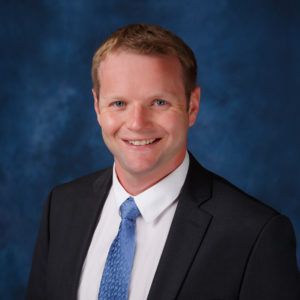
 Sebastian completed his B.Sc. degree in Geology at the University of Chile. His undergraduate thesis was about analyzing the infrared spectrum of core samples. He has 3+ years of experience in geological modeling, classification, and resource estimation of porphyry copper deposits. He joined the CCG and started his M.Sc. degree in 2021 under the supervision of Dr. Clayton Deutsch and Jeff Boisvert.
Sebastian completed his B.Sc. degree in Geology at the University of Chile. His undergraduate thesis was about analyzing the infrared spectrum of core samples. He has 3+ years of experience in geological modeling, classification, and resource estimation of porphyry copper deposits. He joined the CCG and started his M.Sc. degree in 2021 under the supervision of Dr. Clayton Deutsch and Jeff Boisvert.



